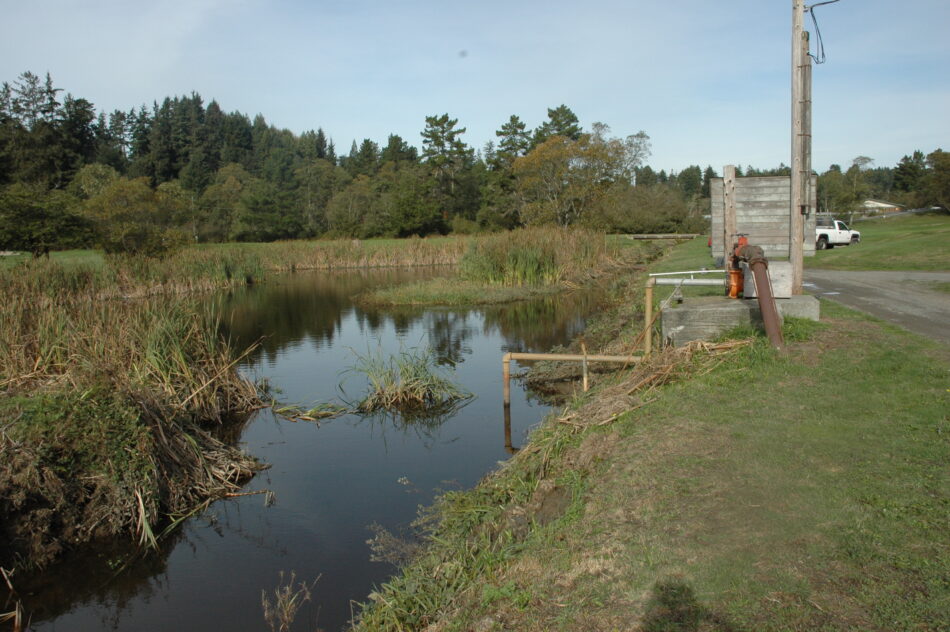
1.) The body of water that will be isolated and pumped down so that an invasive fish species, the Sacramento pikeminnow, can be removed.
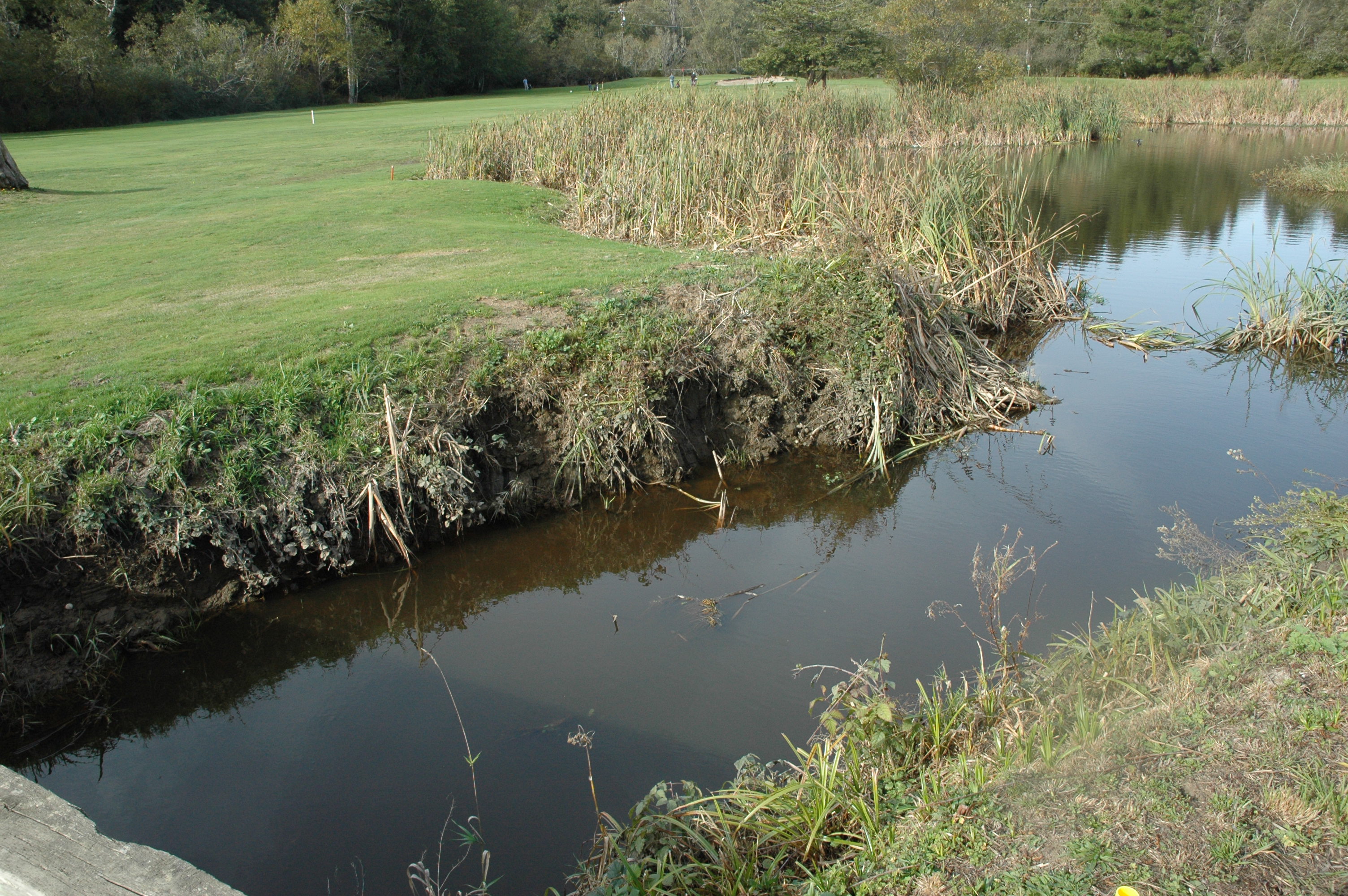
2.) Here is the planned installation site for the downstream AquaDam. Technically the water may flow both directions due to tidal influence from Humboldt Bay, but the water generally falls into the bay. This was a great location for an AquaDam. Parallel banks and sticky mud make a well-sealed AquaDam cofferdam.
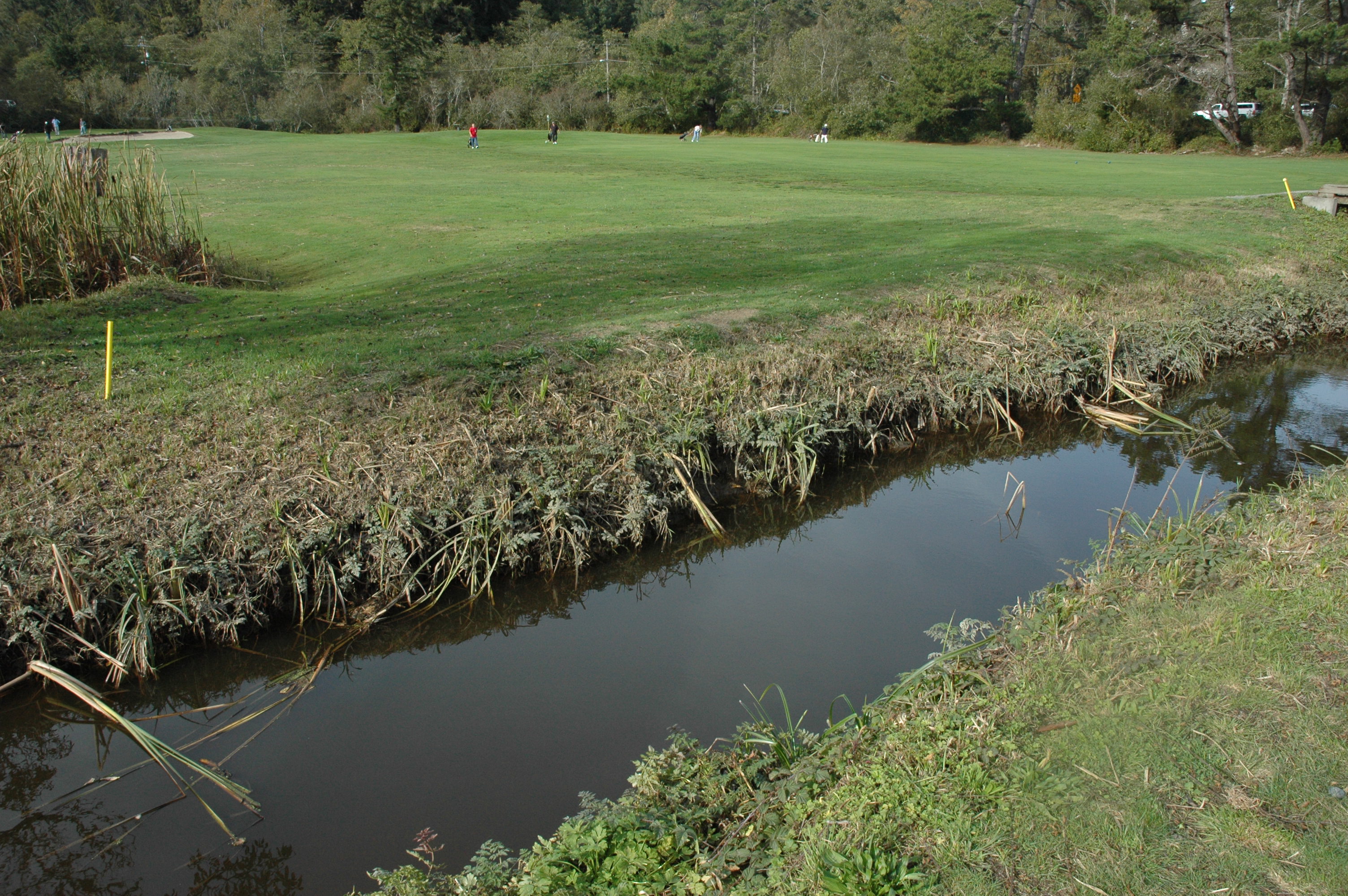
3.) This is the planned installation site for the upstream AquaDams. The 4ft tall AquaDam will be there for support to the 8ft tall dam.
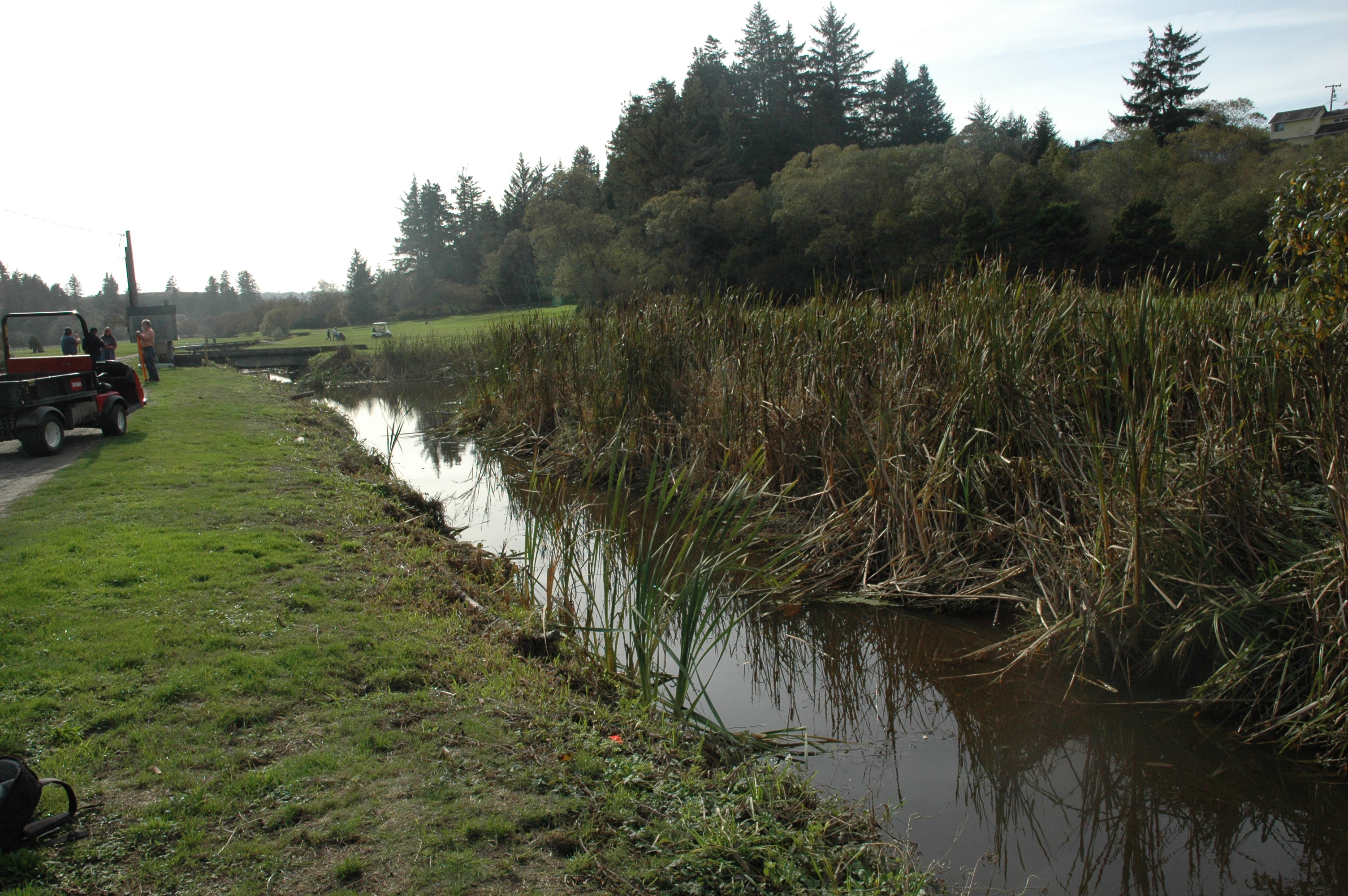
4.) Looking downstream from the upstream AquaDams location. The pond needing isolation is to the right of the reeds and the downstream AquaDam will go on this side of the foot bridge.
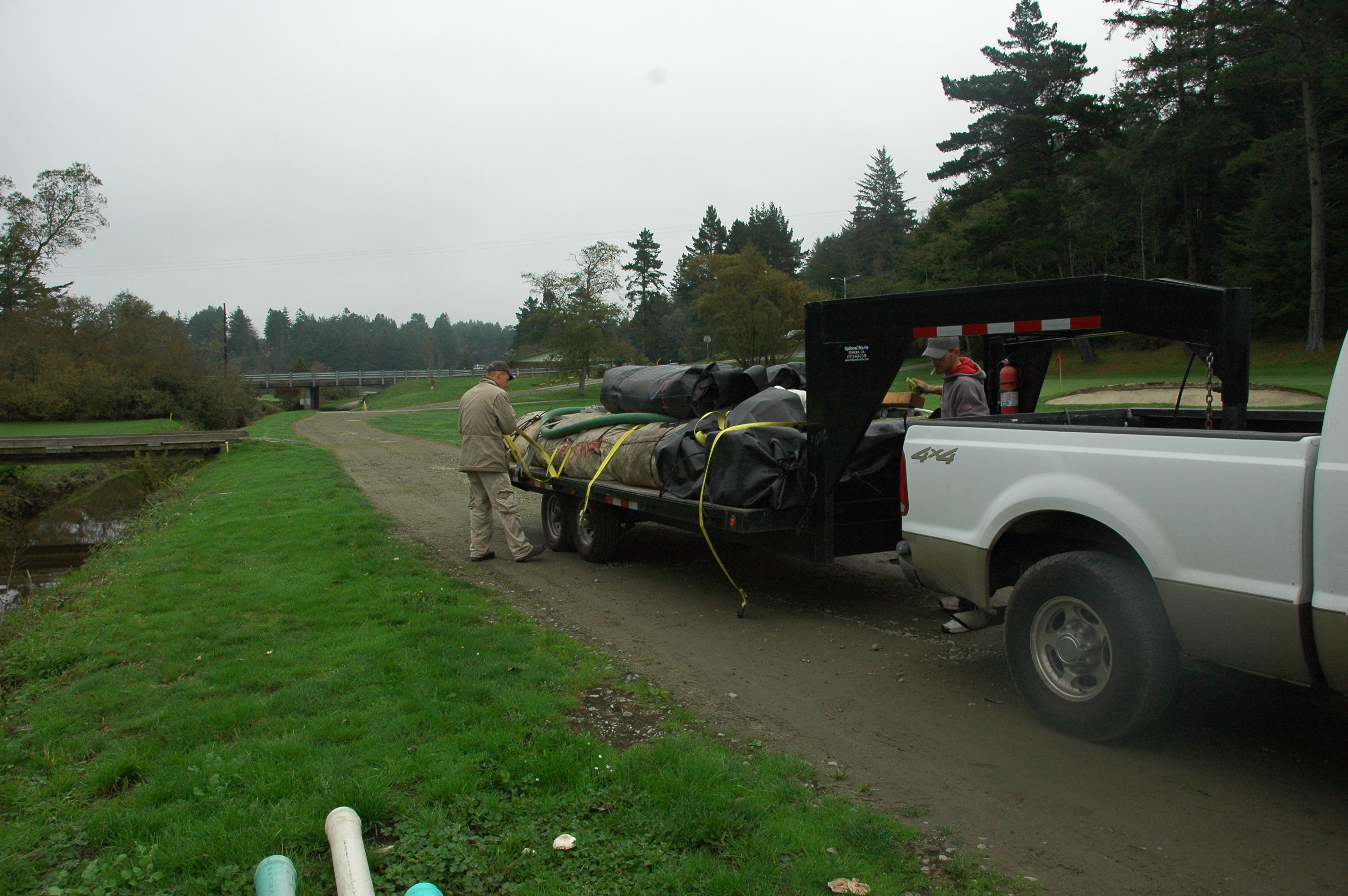
5.) The three AquaDams have arrived on site. AquaDams are shipped rolled-up like a carpet roll on a wooden beam, wrapped in a protective covering, and have lifting ropes/straps.
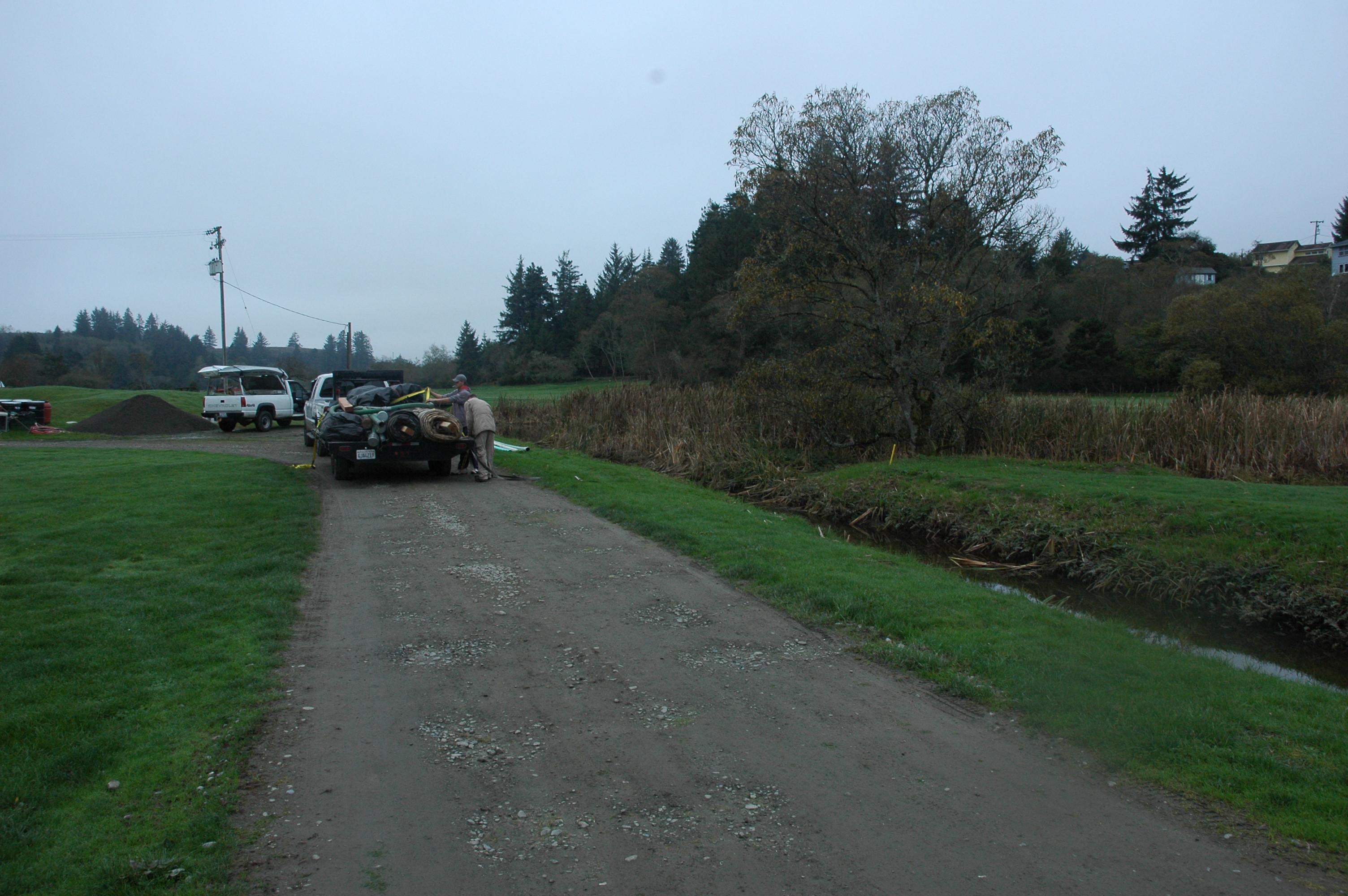
6.) 3-inch water pumps and all the needed hoses to fill the AquaDams were also brought along with the dams. Equal pumping power should be applied to the fill-tubes of an AquaDam during installation.
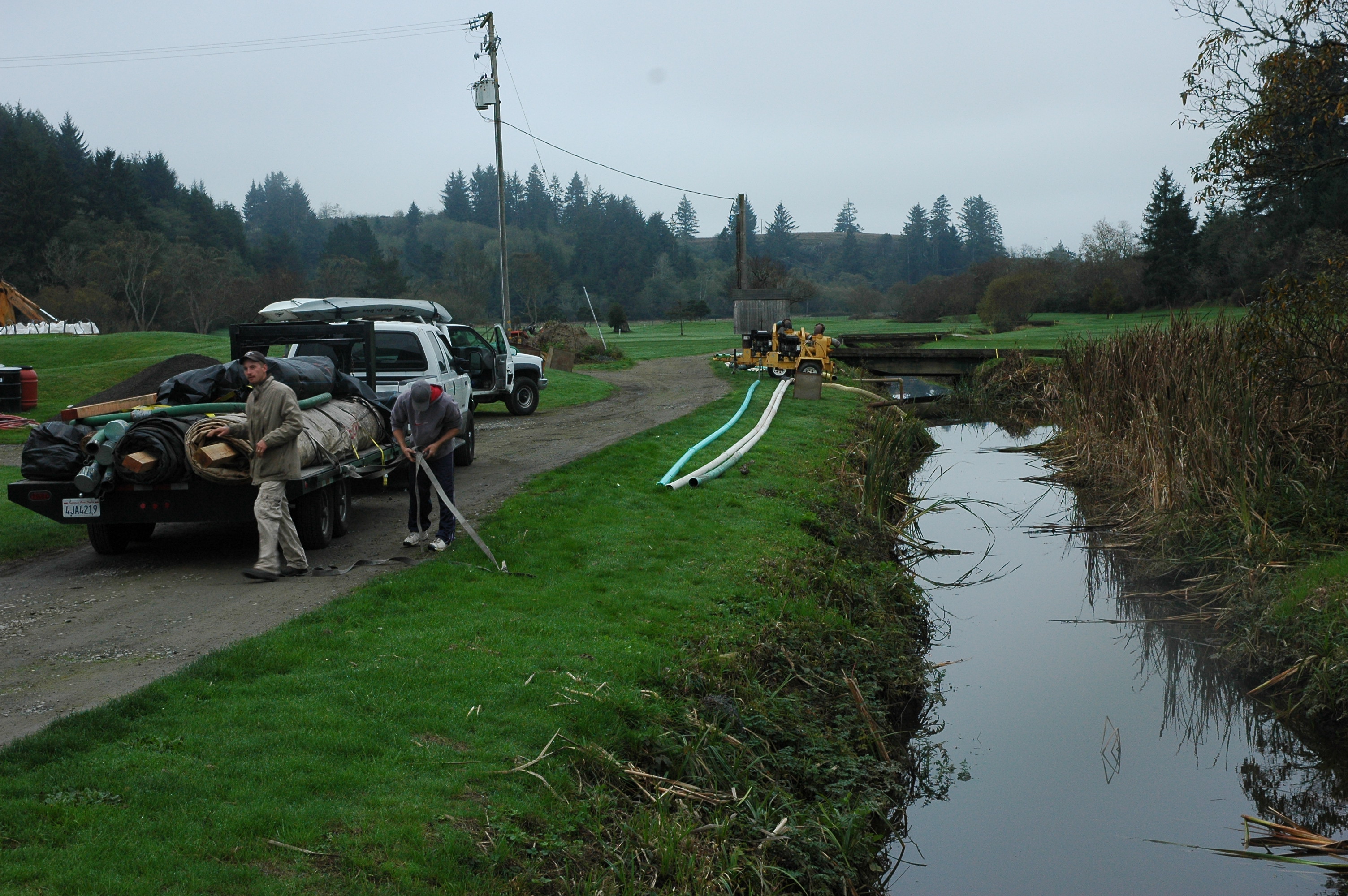
7.) Workers unload the AquaDams and setup pumps.
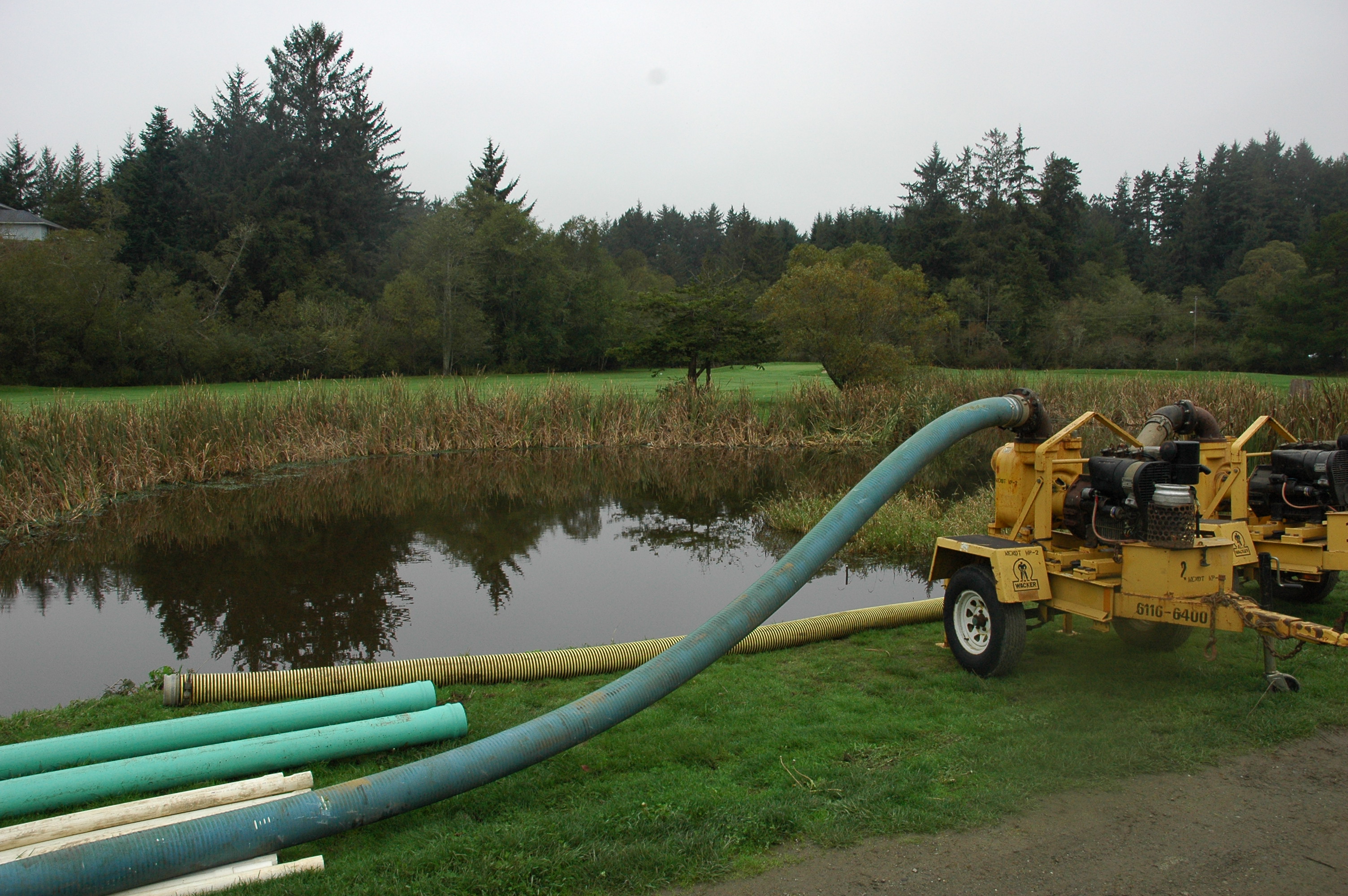
8.) These two pumps will remove the water from the isolated work area (the pond) and push it downstream into the greater body of water.
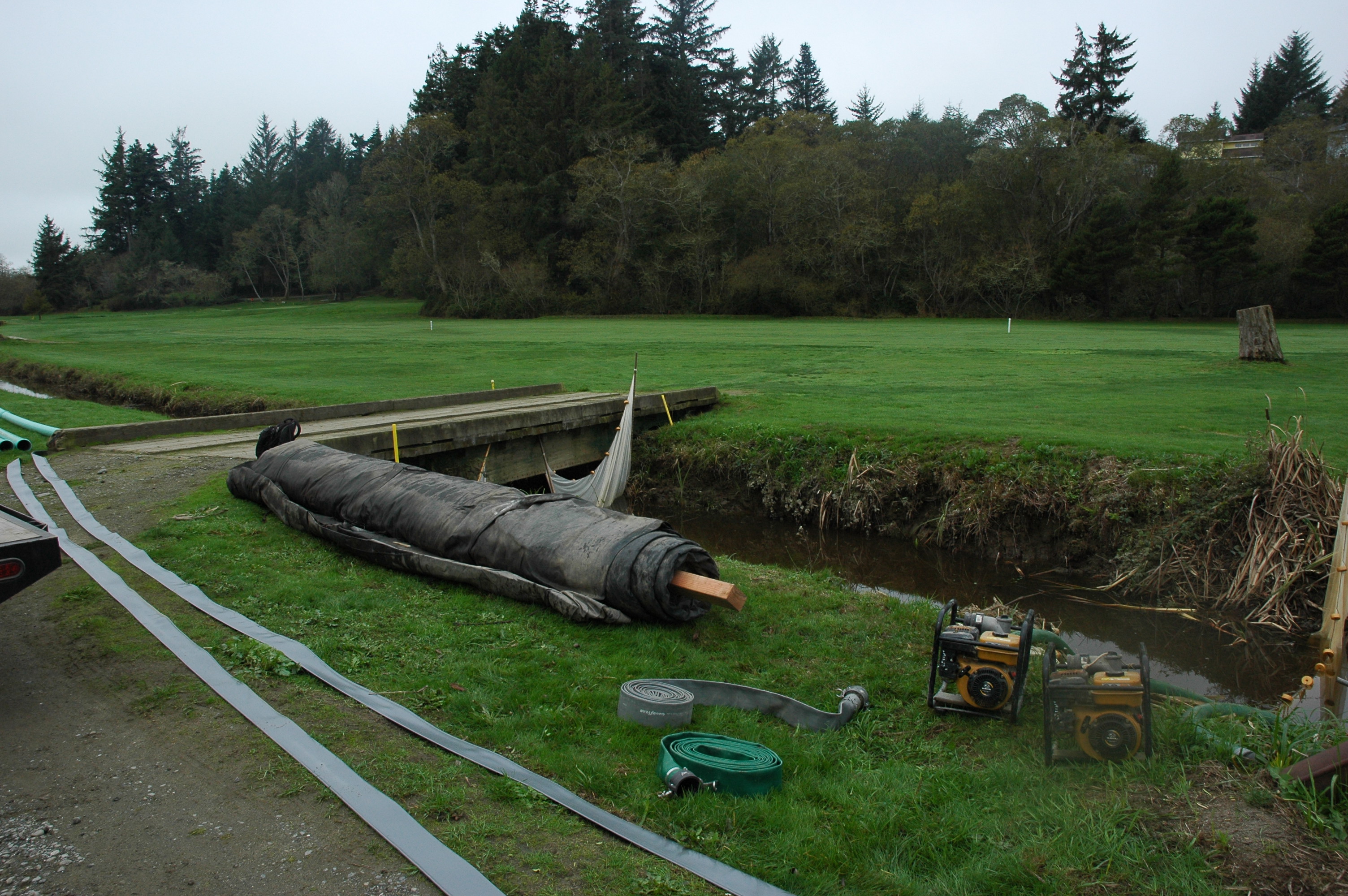
9.) The 8ft tall downstream AquaDam is at its starting bank and ready to be installed.
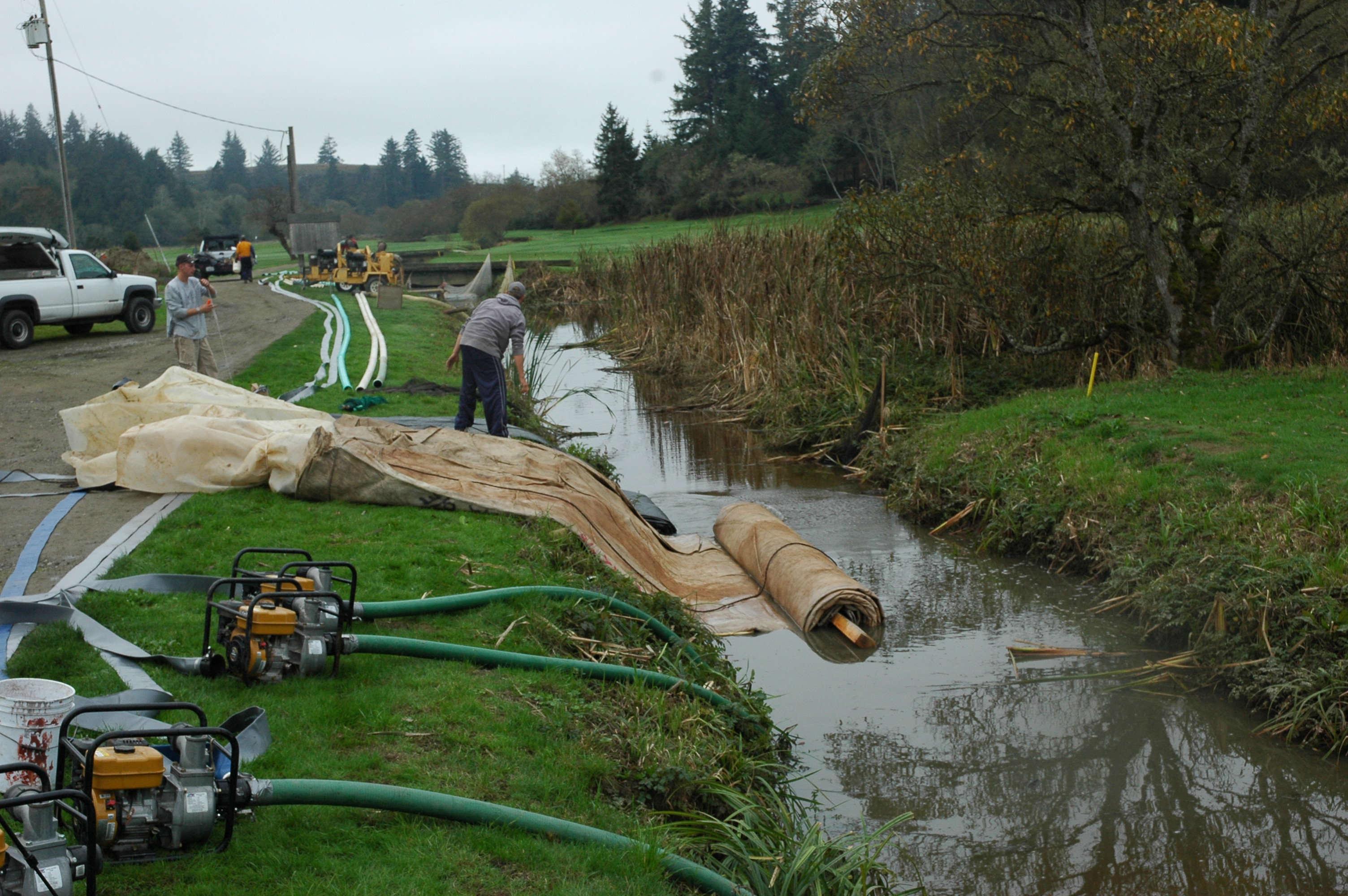
10.) The first two AquaDams launched from their starting bank on the upstream side. AquaDams are made of light weight flexible materials and will float when empty in deep enough water.
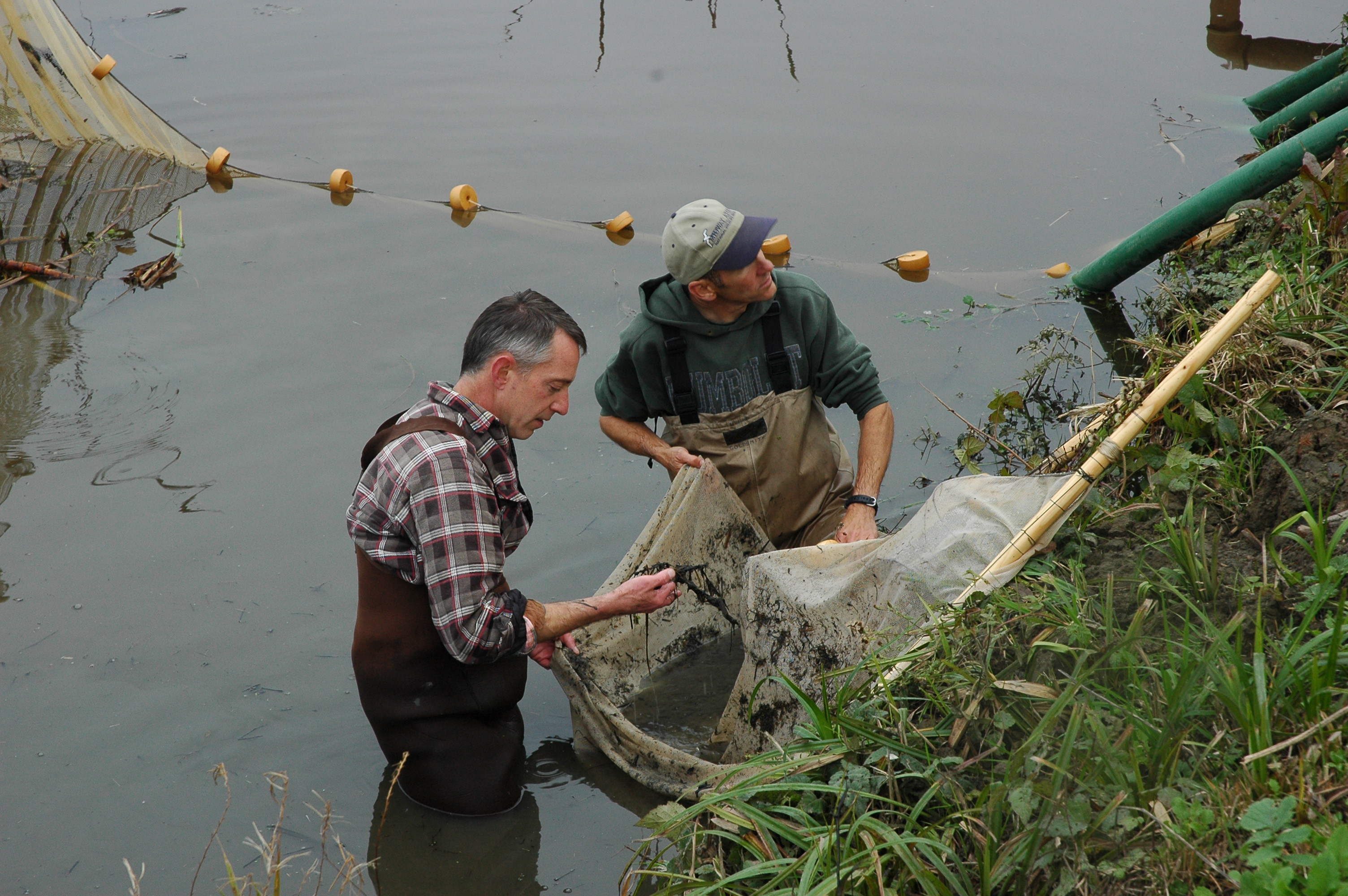
11.) Workers used nets to capture fish and move them to temporary holding areas while their home was drained off.
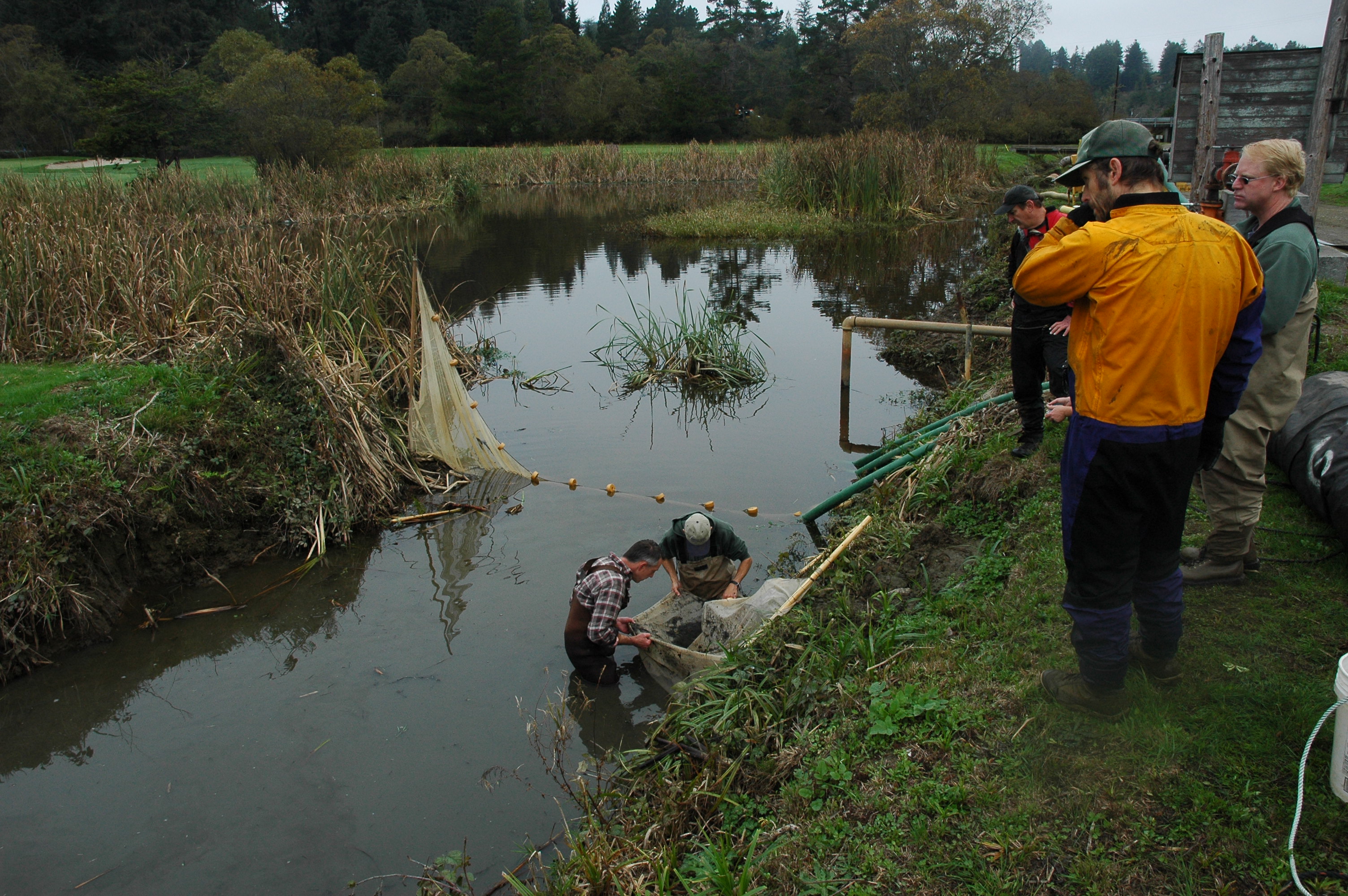
12.) Fish specialists working for both Federal and State agencies inspect the captured fish for species verification.
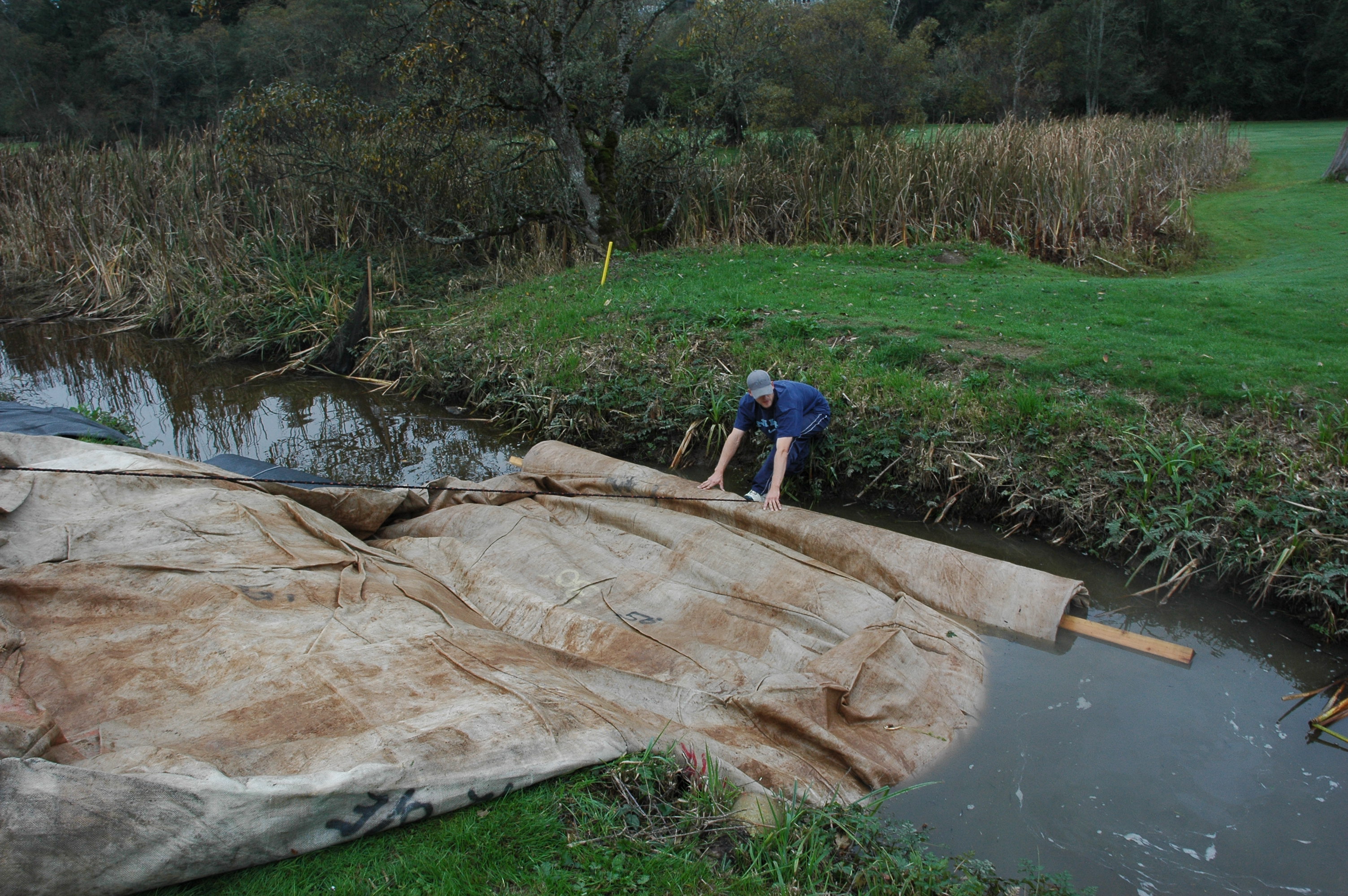
13.) The AquaDam is being filled by two 3-inch water pumps. Both fill-tubes should be filled at the same time equally. As the water pressure builds, the AquaDam unrolls. In this way, the weight and pressure of the water does most of the work.

14.) A rope was used to help hold back the AquaDam as it was being filled with water. This is to allow head pressure to build. Head pressure keeps the AquaDam stable in the water. If there was no head pressure, the AquaDam would have neutral buoyancy, and currents would push it around.
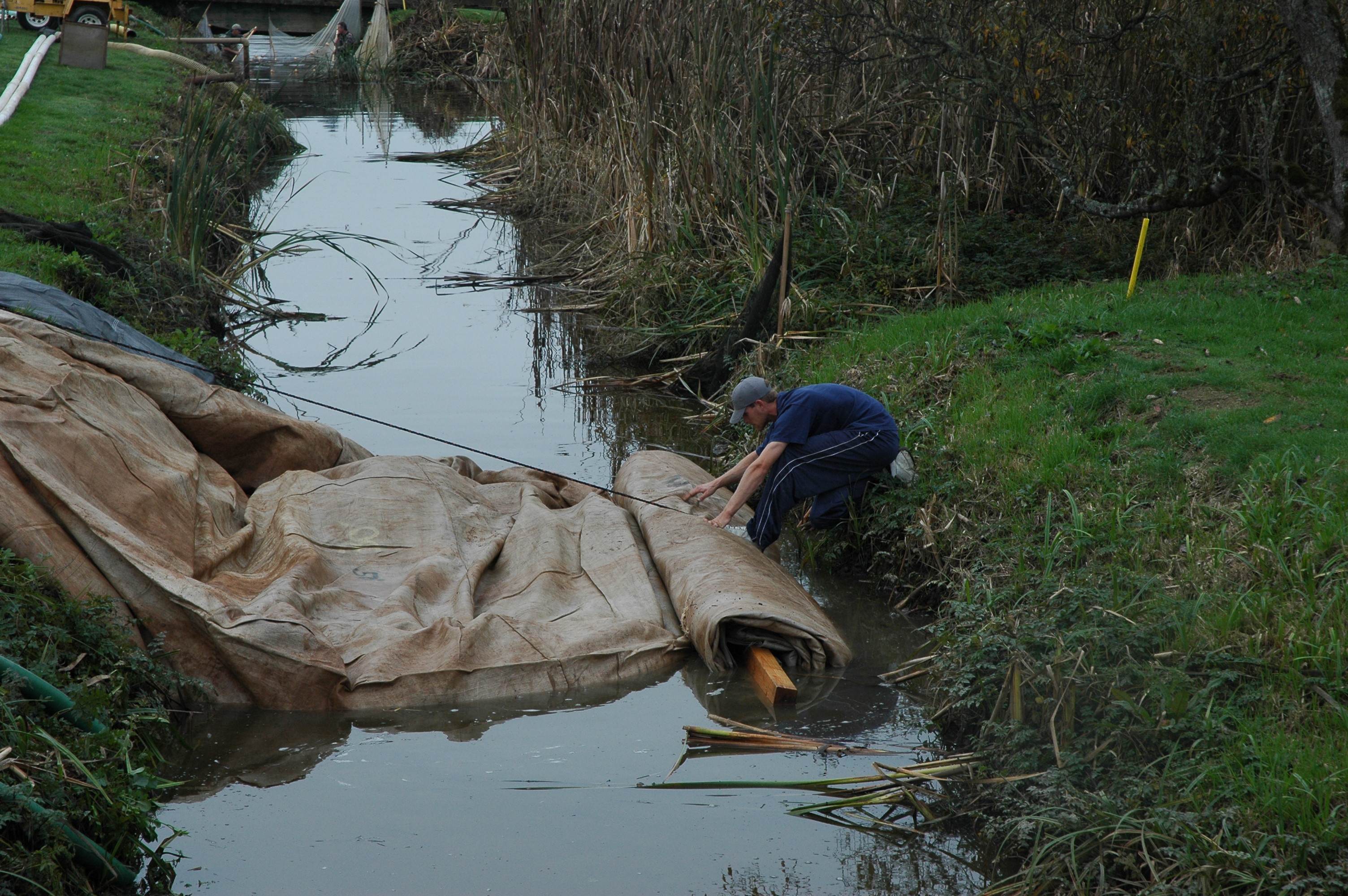
15.) The AquaDam was also held back by a worker bracing against the ending bank, to help the unit build head.
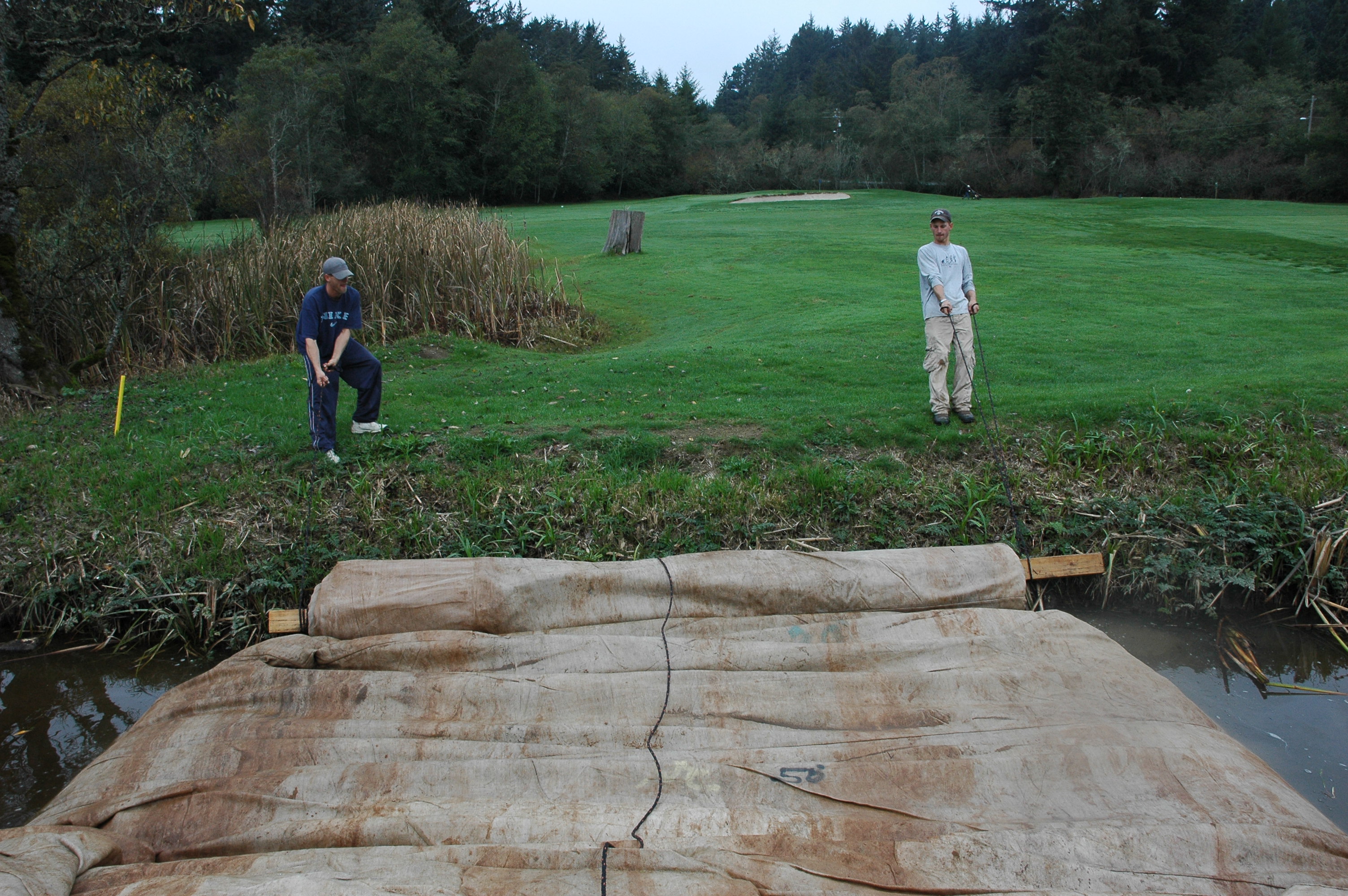
16.) A square landing is a necessity. These workers are steering the roll end of the AquaDam as it unrolls up the shore. The AquaDam should meet the bank at a perpendicular angle.

17.) The roll end of main AquaDam has been tied back so that it can't unroll anymore, but the water level inside the unit needs to continue to build.
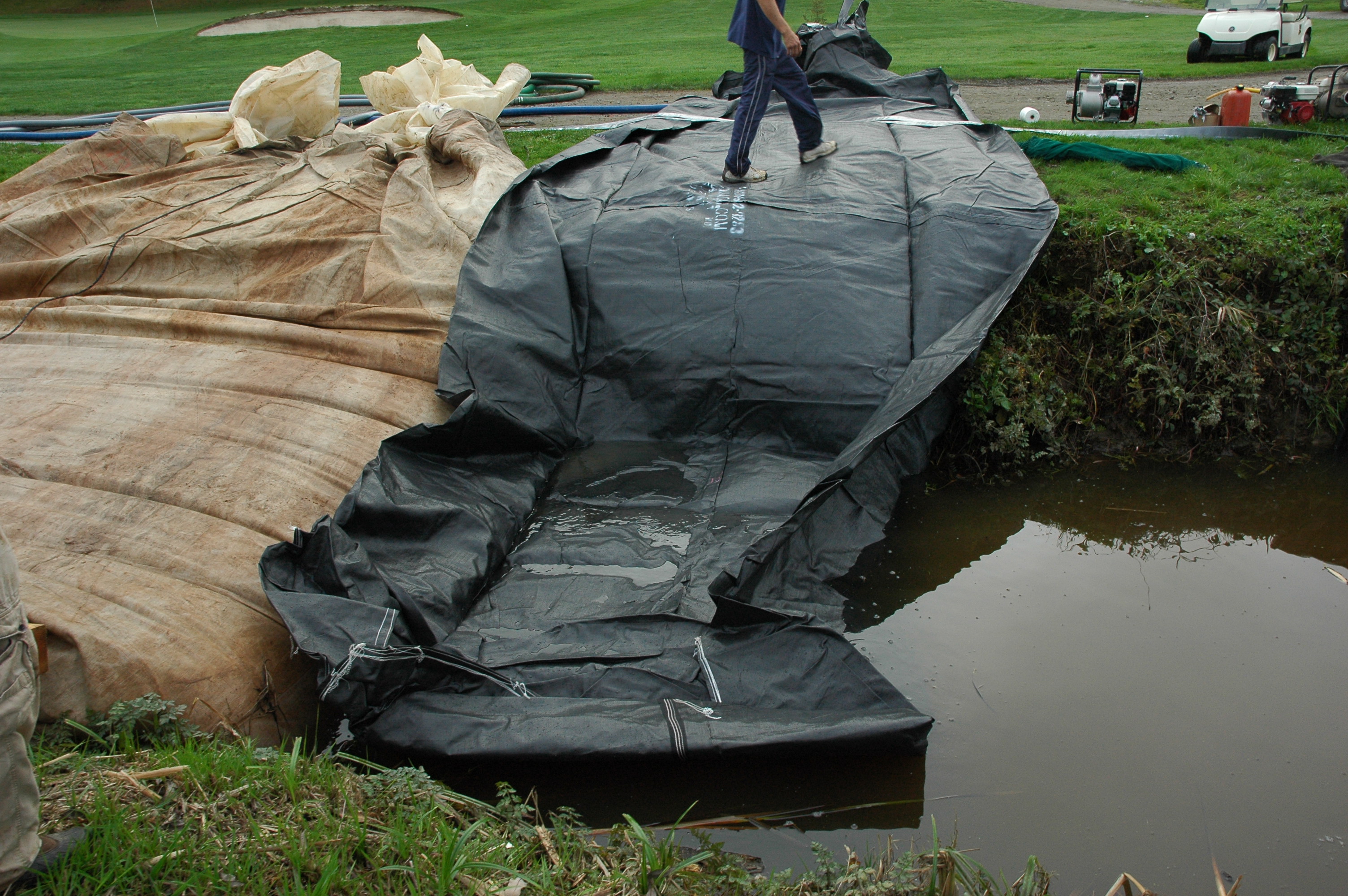
18.) The upstream pool depth became deeper than expected, so a 4ft tall support AquaDam was used to assist the upstream 8ft tall AquaDam.

19.) The 4ft tall support AquaDam was pulled into place alongside the 8ft tall AquaDam. The closer these two are together the less water that can build up between them. The 4ft tall support AquaDam was also a few feet shorter in length than the 8ft tall unit to allow any water that may end up between the two to exit.
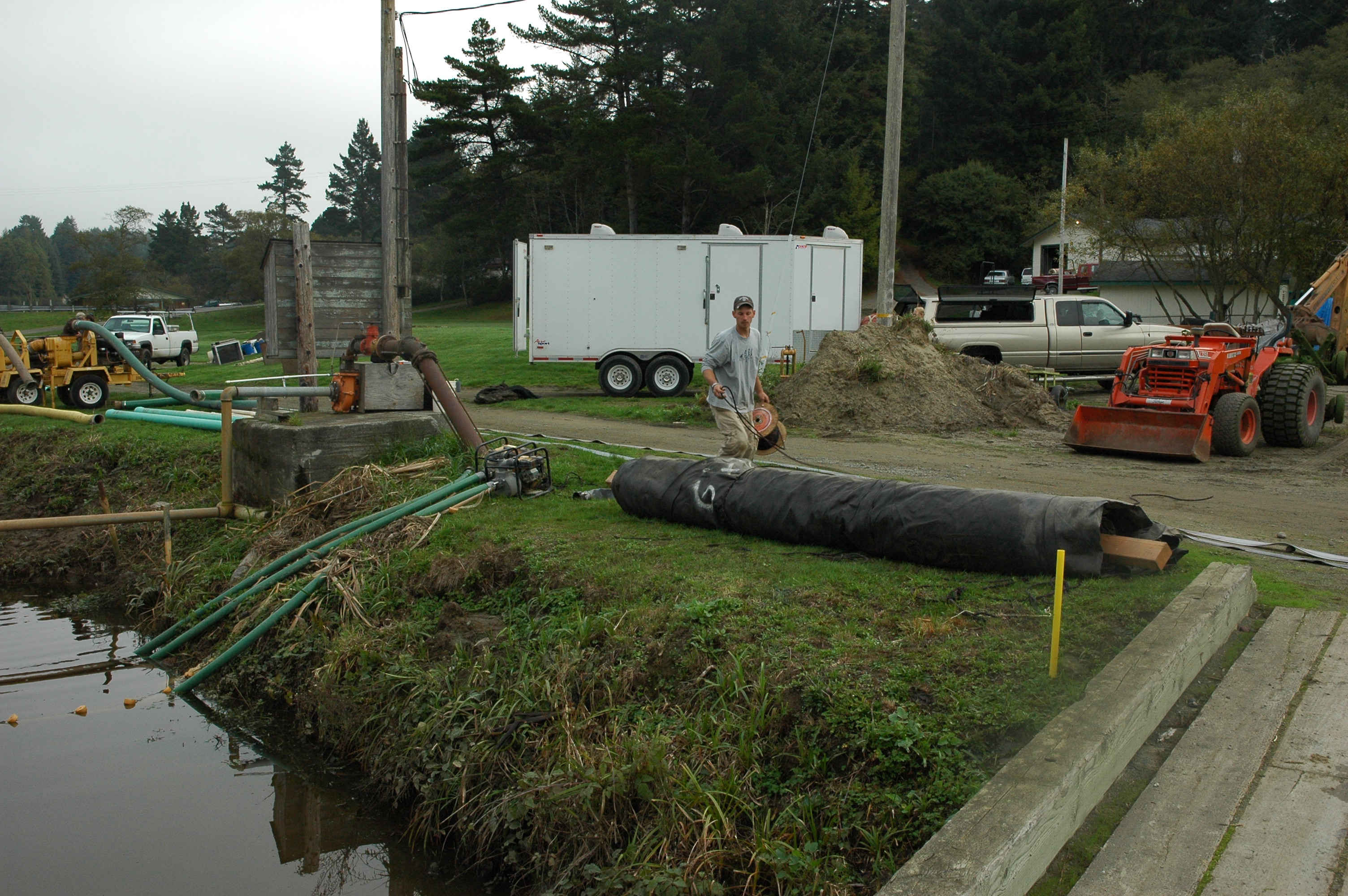
20.) Now that the upstream AquaDams are in place, it's time to install the downstream AquaDam.
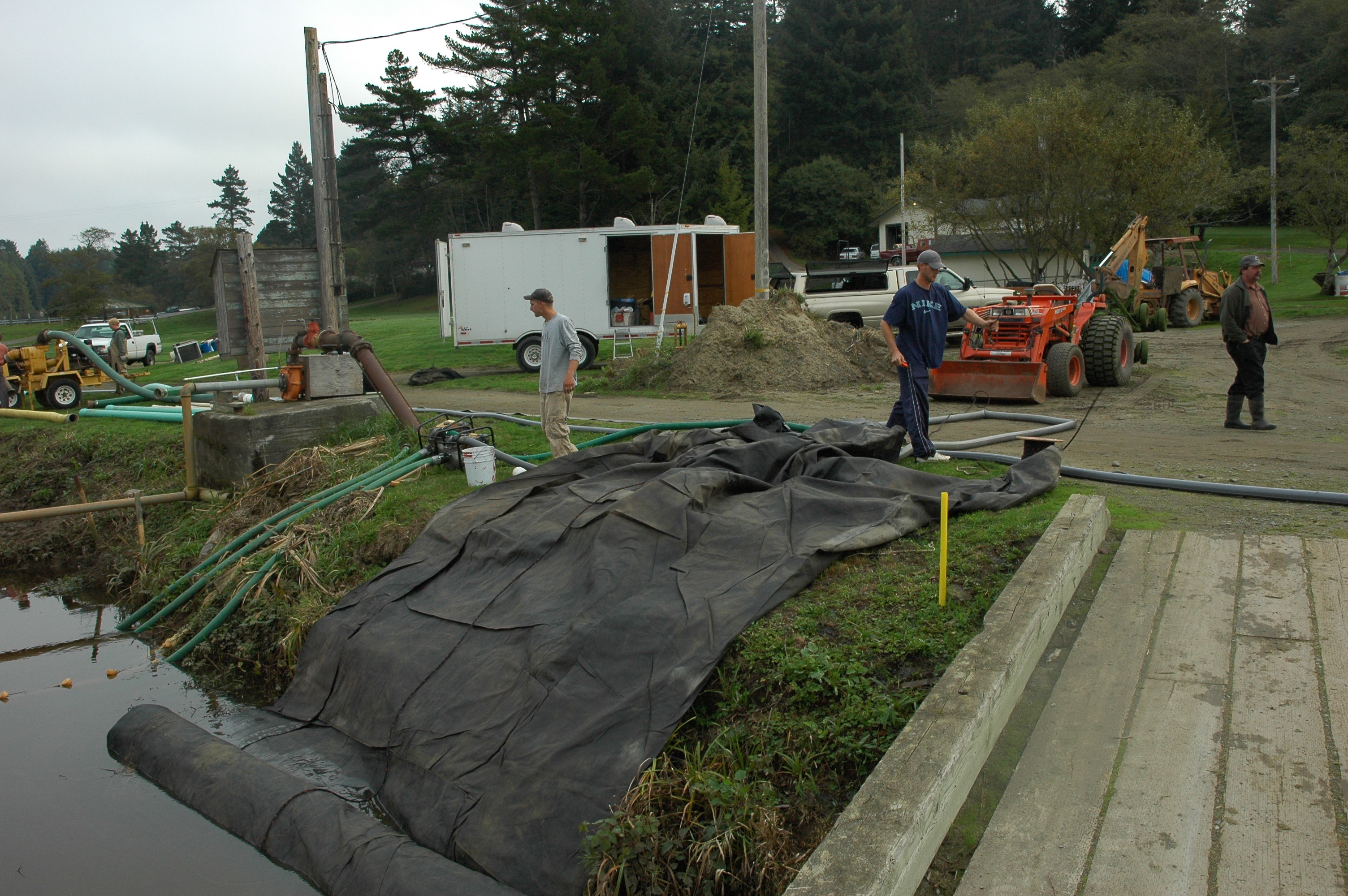
21.) The open end and fill-tubes have been pulled up the starting bank and the AquaDam was rolled into the channel. Workers have already placed the discharge hoses into the fill-tubes and begun filling the second 8ft tall AquaDam.
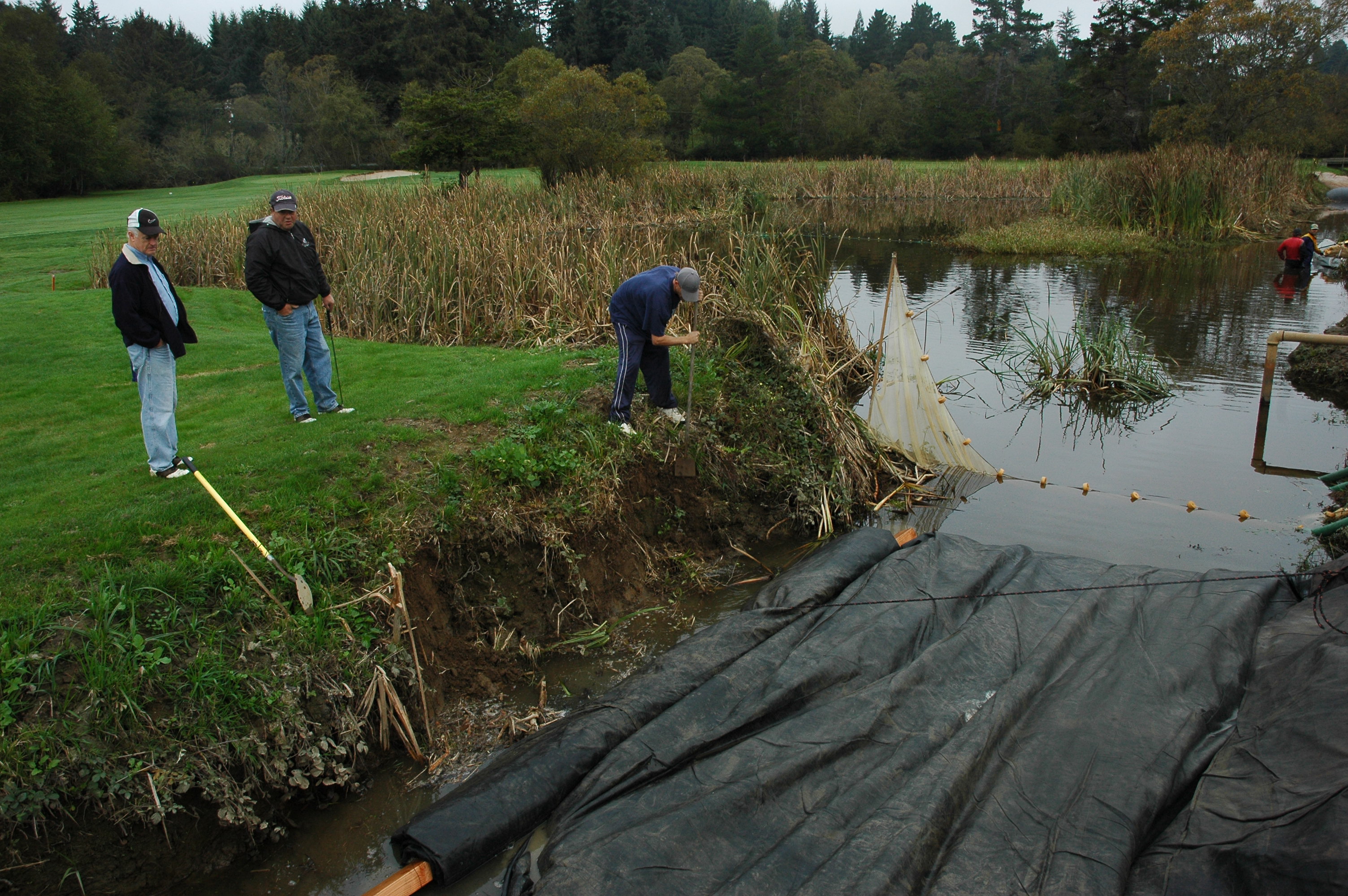
22.) The AquaDam slowly unrolls as it fills with water. A worker prepares the ending bank for the roll end of the AquaDam.
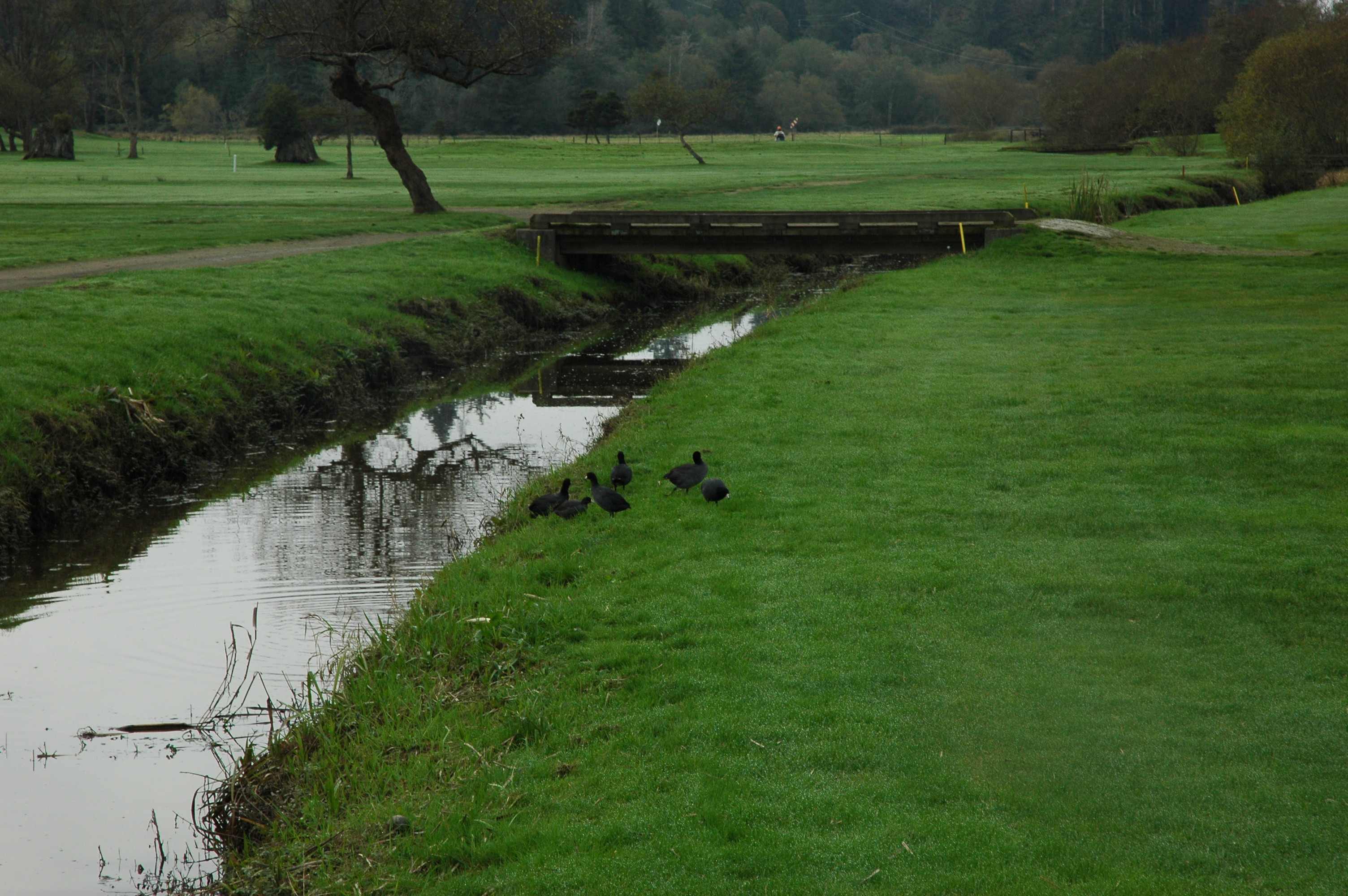
23.) Local wildlife investigating what’s going on in their waterway.
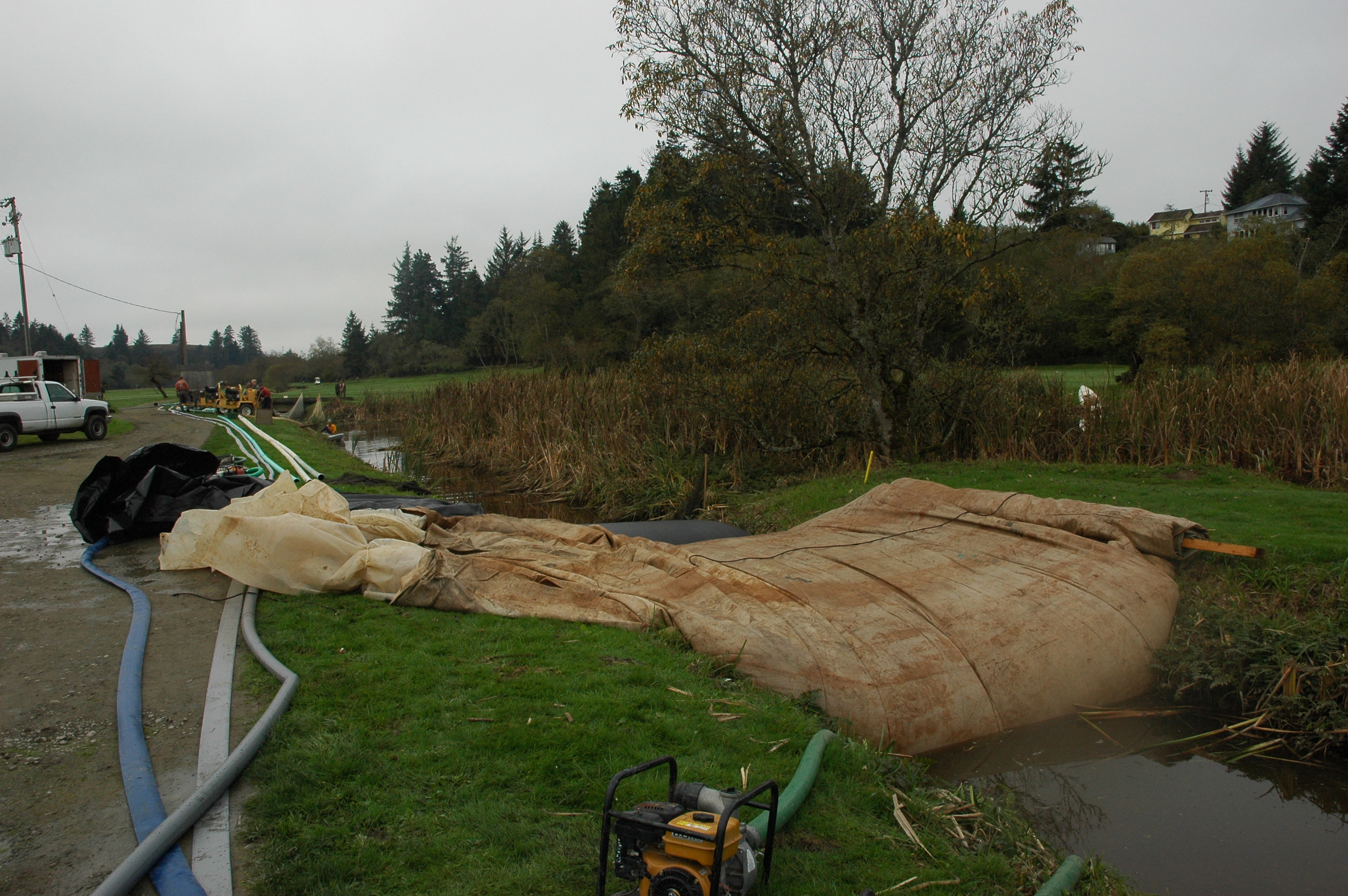
24.) Upstream AquaDams are doing great and continue to fill.
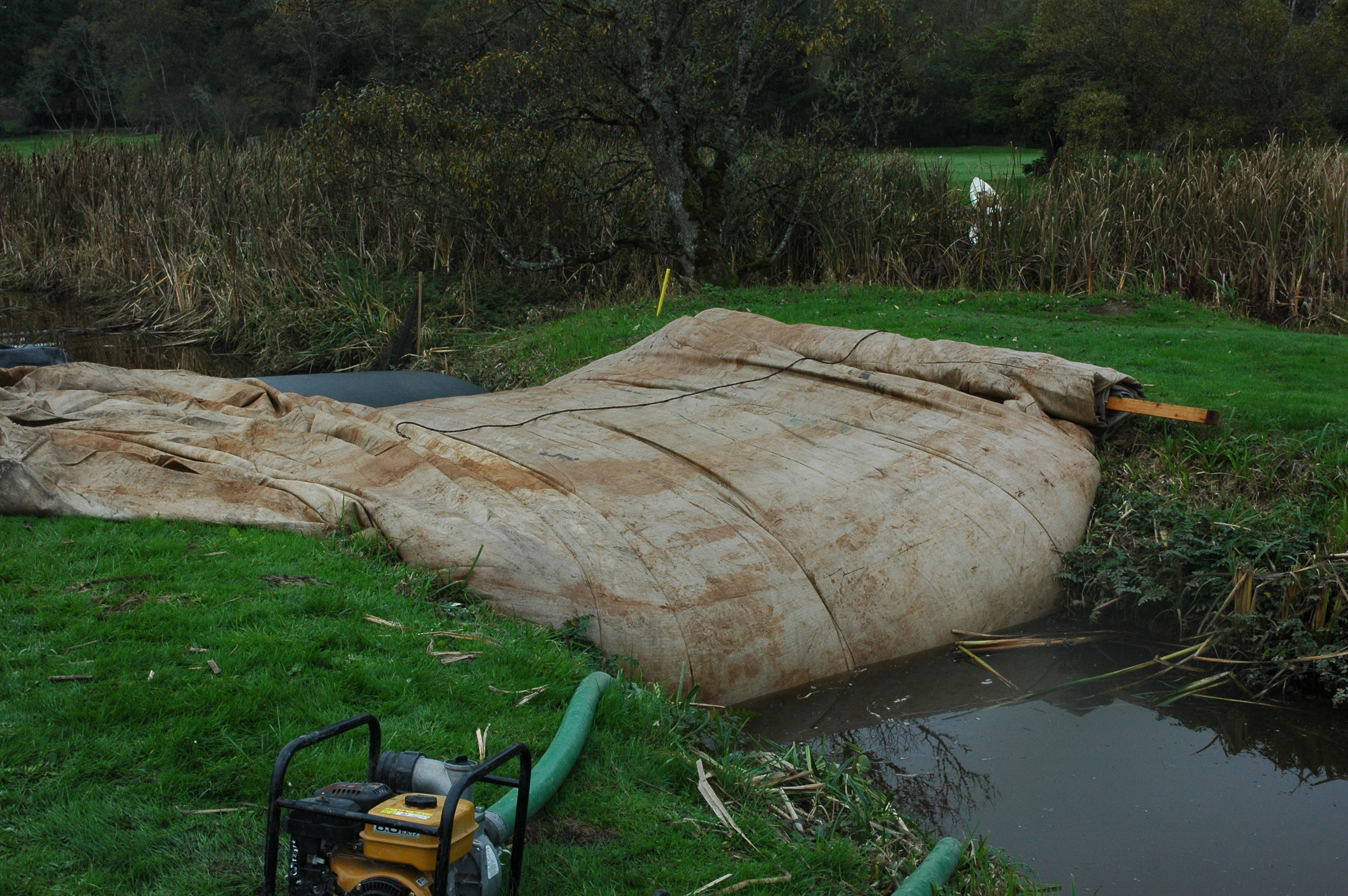
25.) The upstream 8ft tall AquaDam is almost as tall as its ending bank.

26.) Looking downstream towards the first 8ft tall AquaDam and work area. The upstream and down stream AquaDams make a staggered configuration.
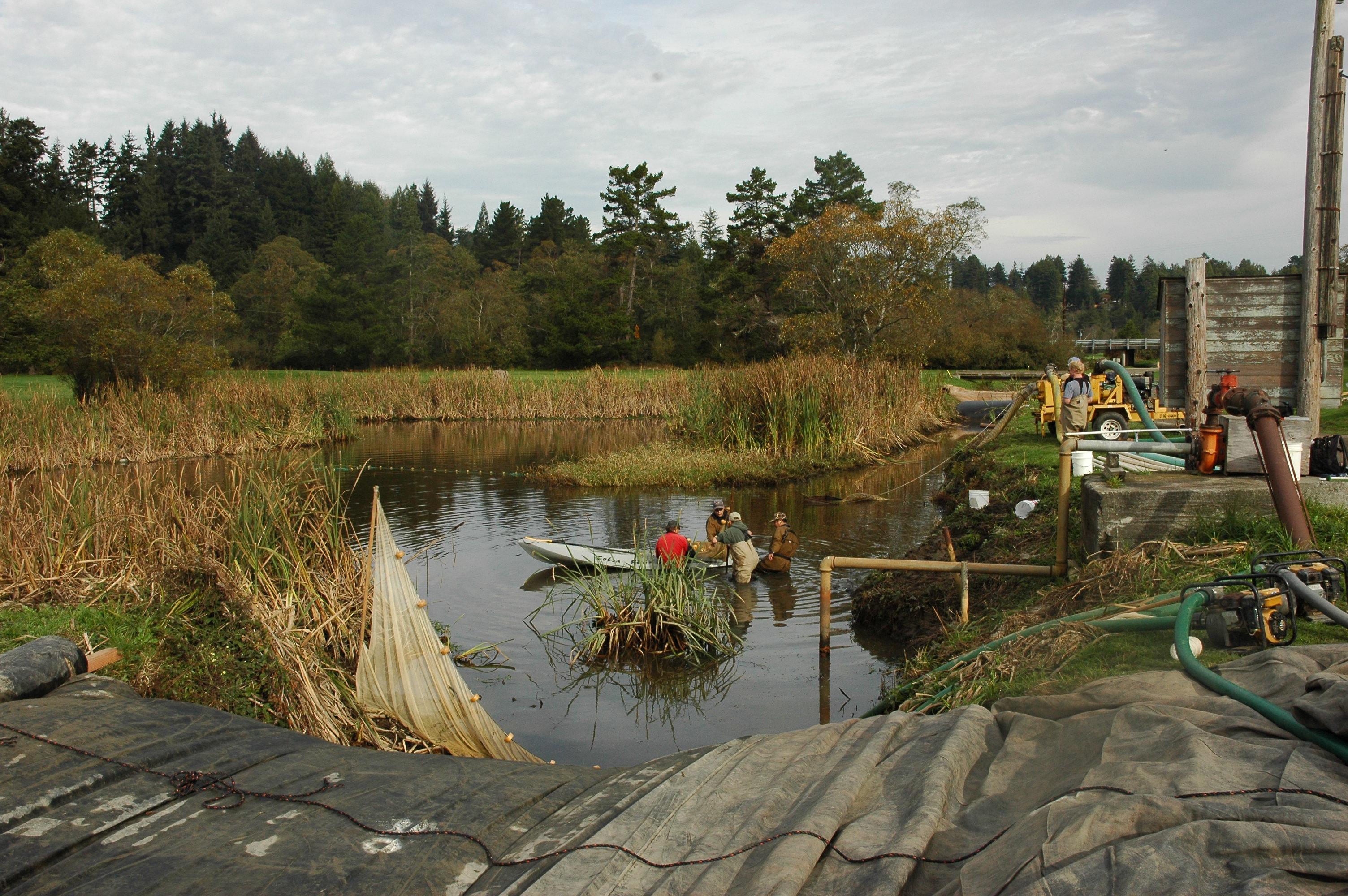
27.) Now that the pond has been isolated the invasive fish capture can continue. The de-watering pumps are running, and larger nets will be pulled through the ever-shrinking body of water.
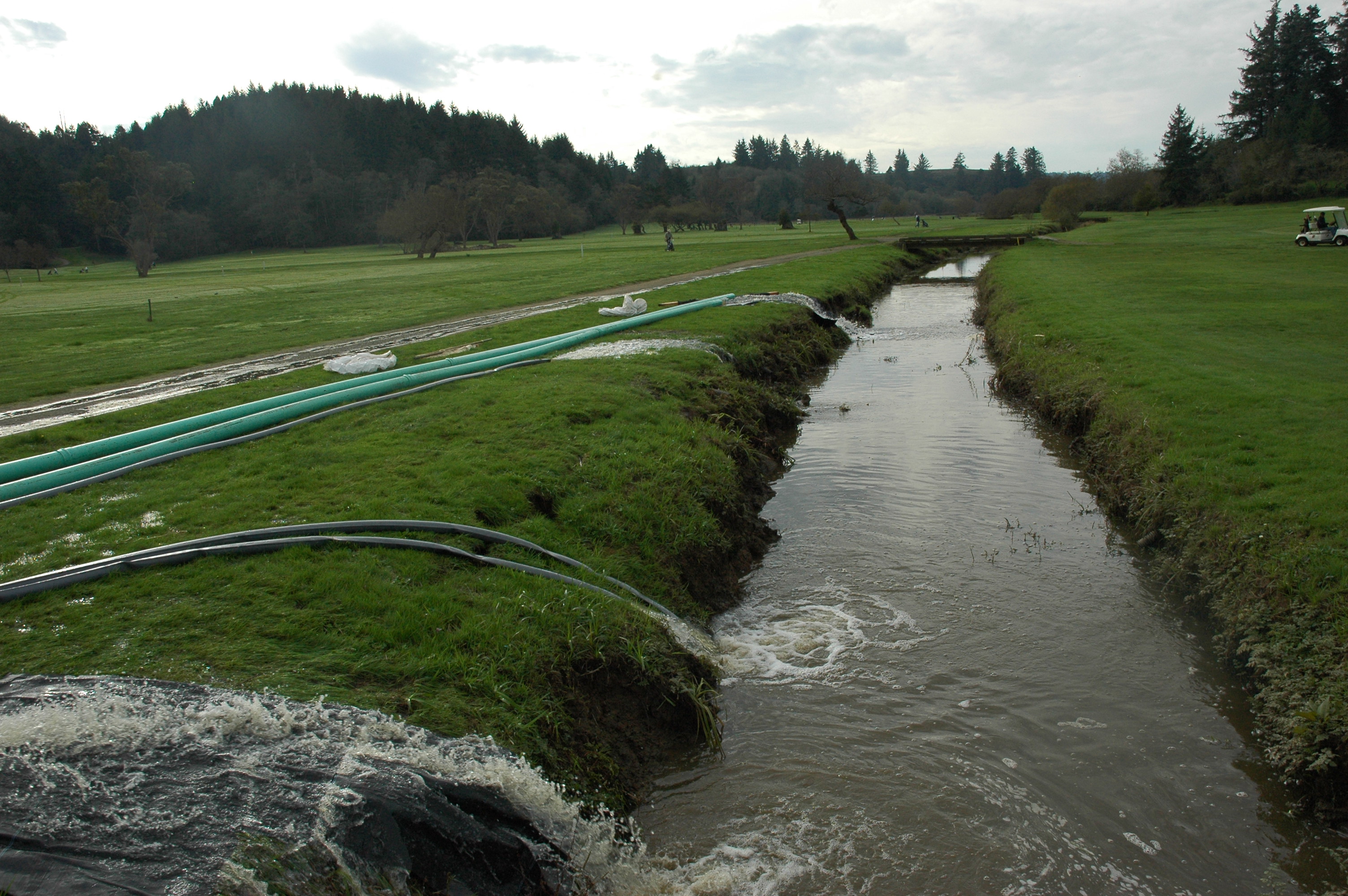
28.) Looking downstream we can see the work area water being discharged into the bay.

29.) Removing the invasive Sacramento pikeminnow was very important to these folks.
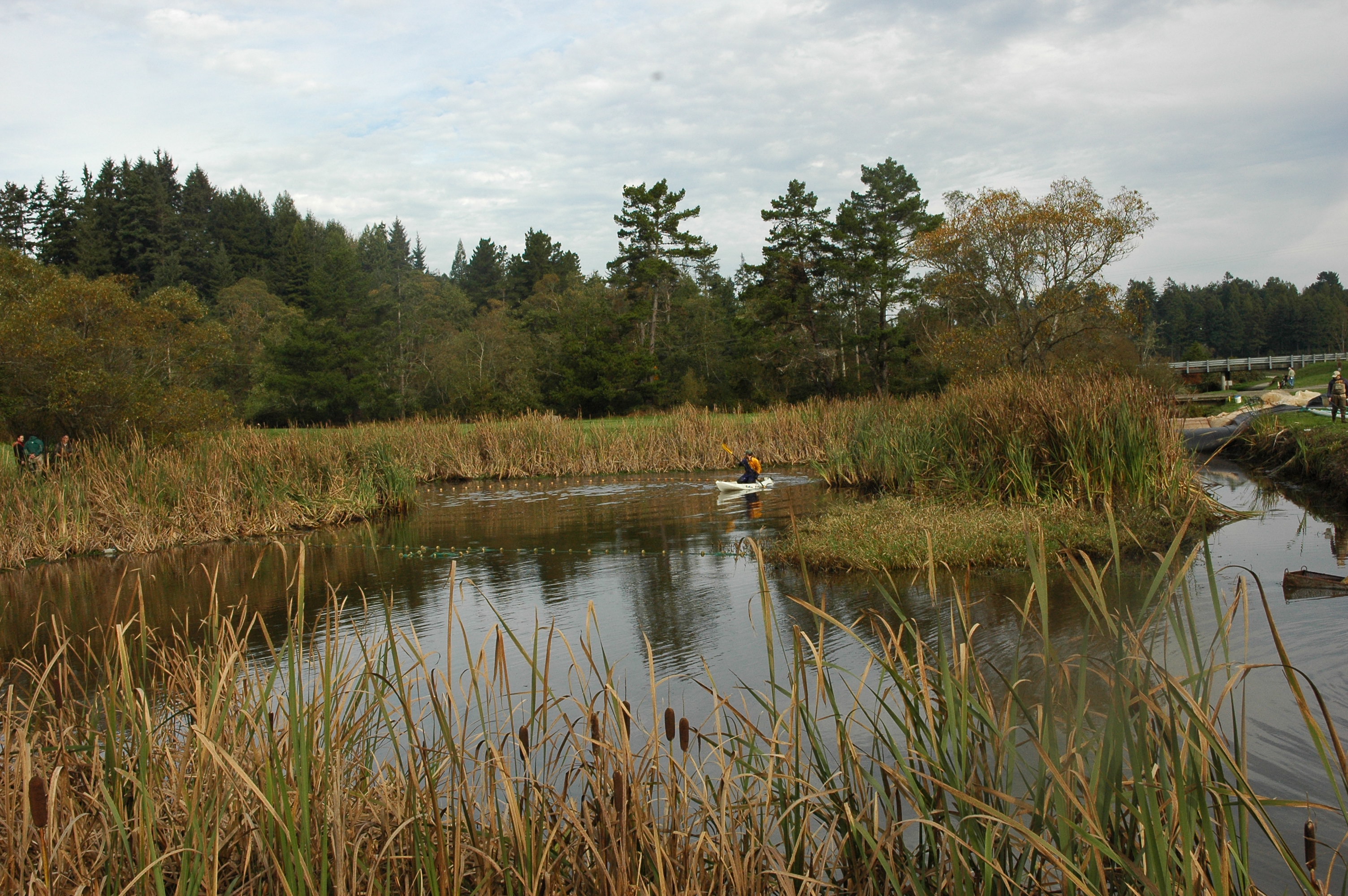
30.) With the pond water depth decreasing, workers use a boat and nets to corral fish.
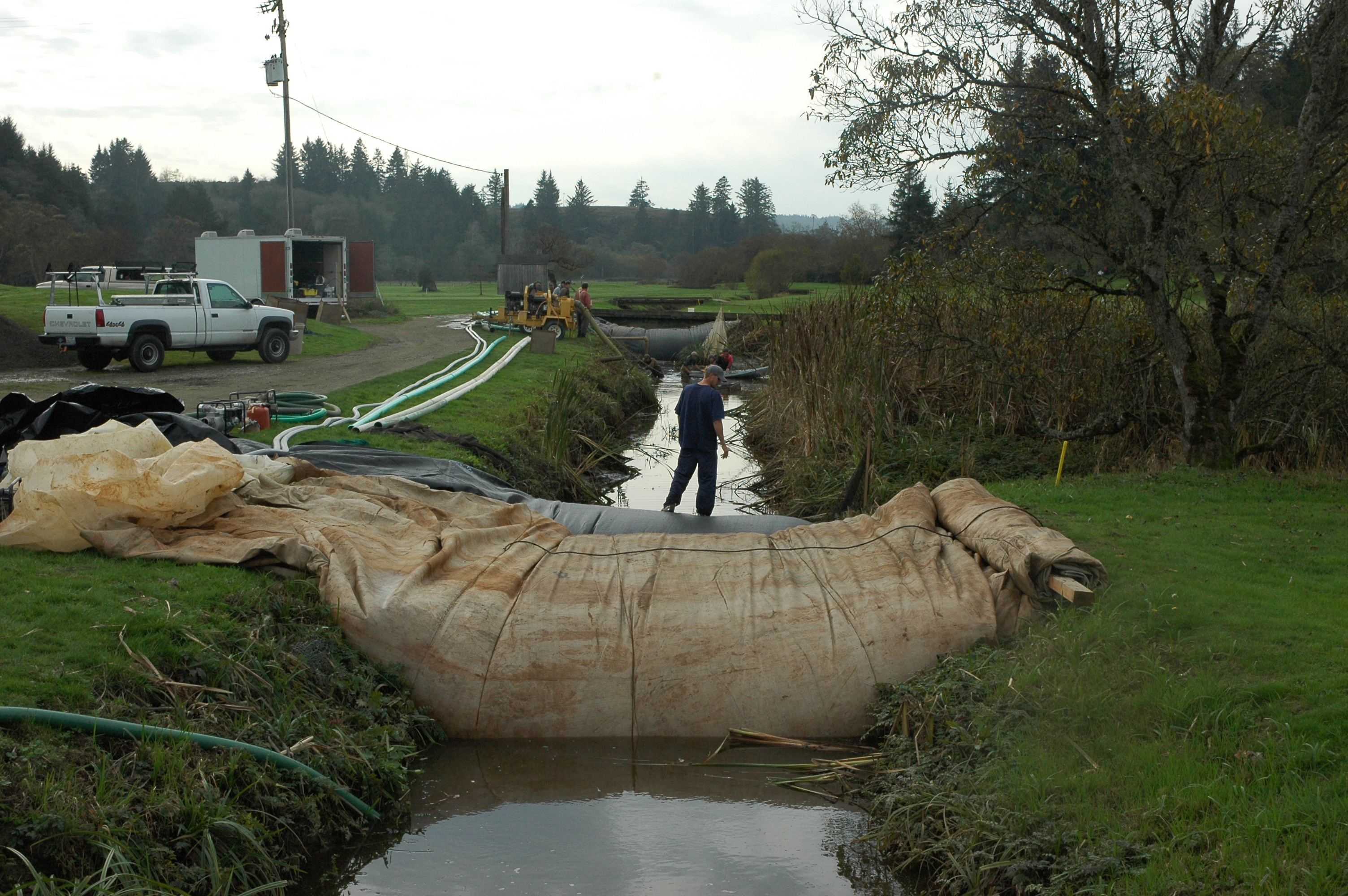
31.) Once full, AquaDams are firm enough to walk on. All kinds of vehicles have been driven across AquaDams as well, with no problems.
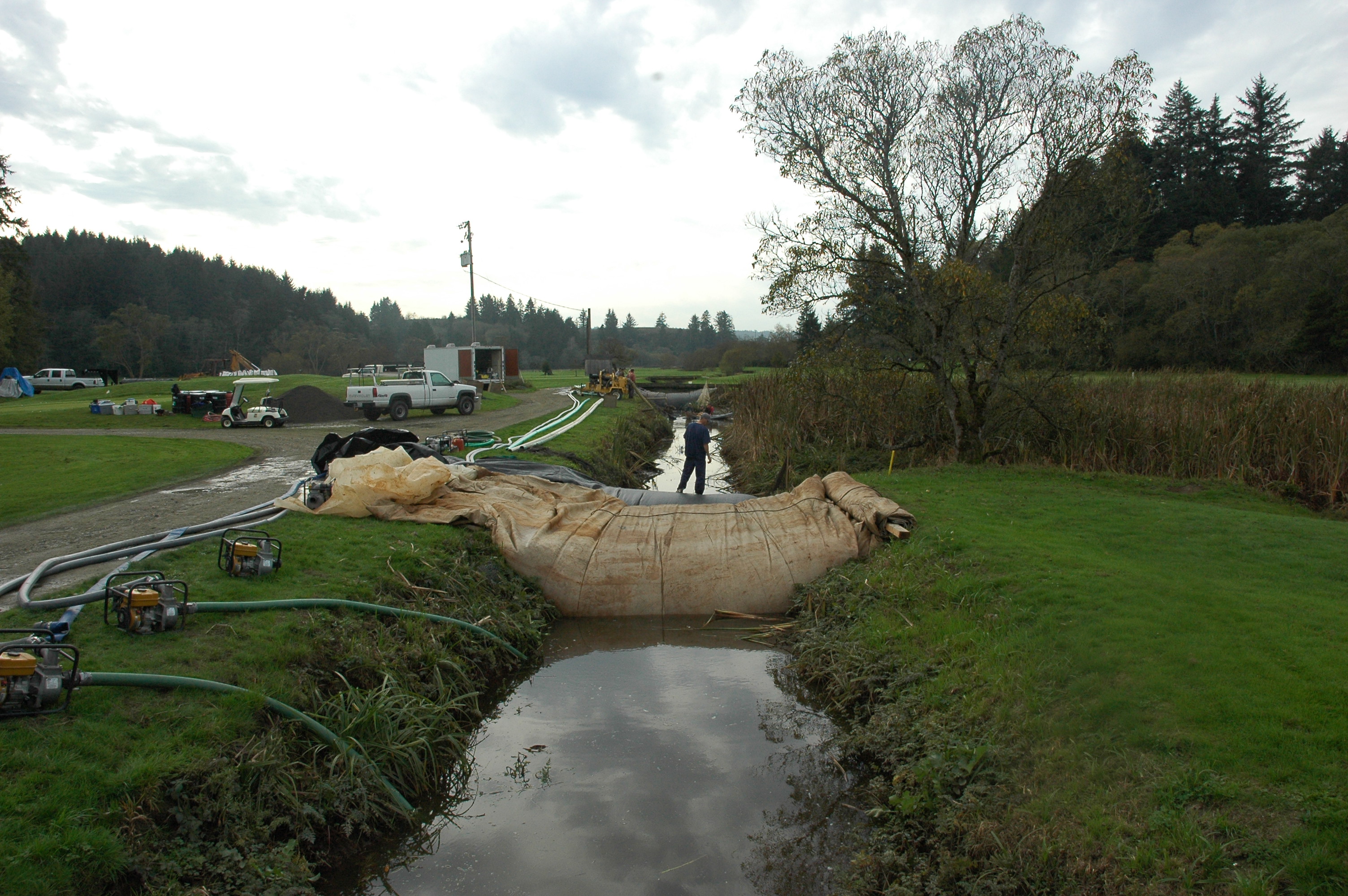
32.) Overview of work area. Can you see the water depth difference from upstream to the work area?

33.) A worker identifies a captured fish for sorting.
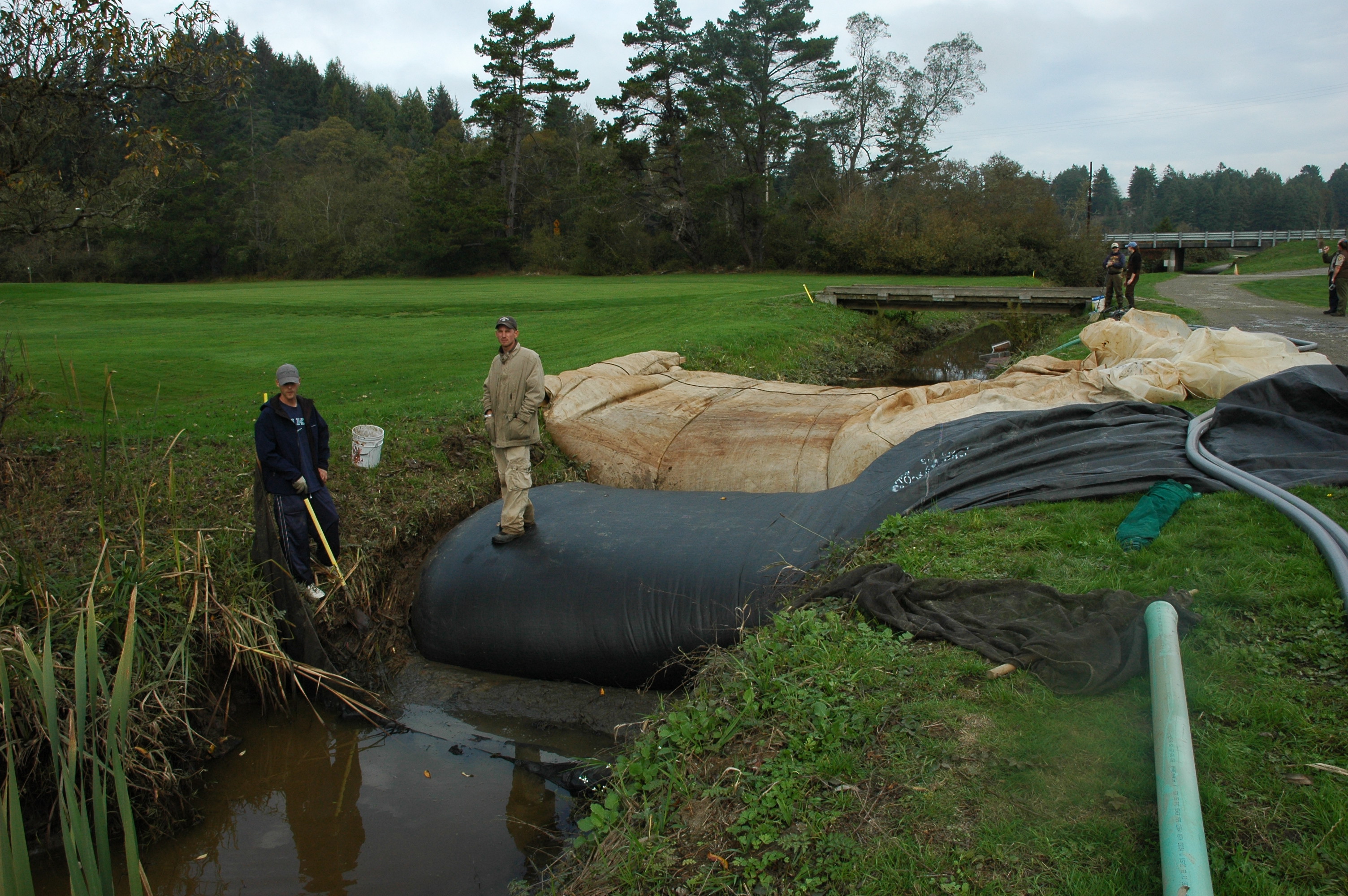
34.) Workers watch the work area as it is de-watered and take a short break.
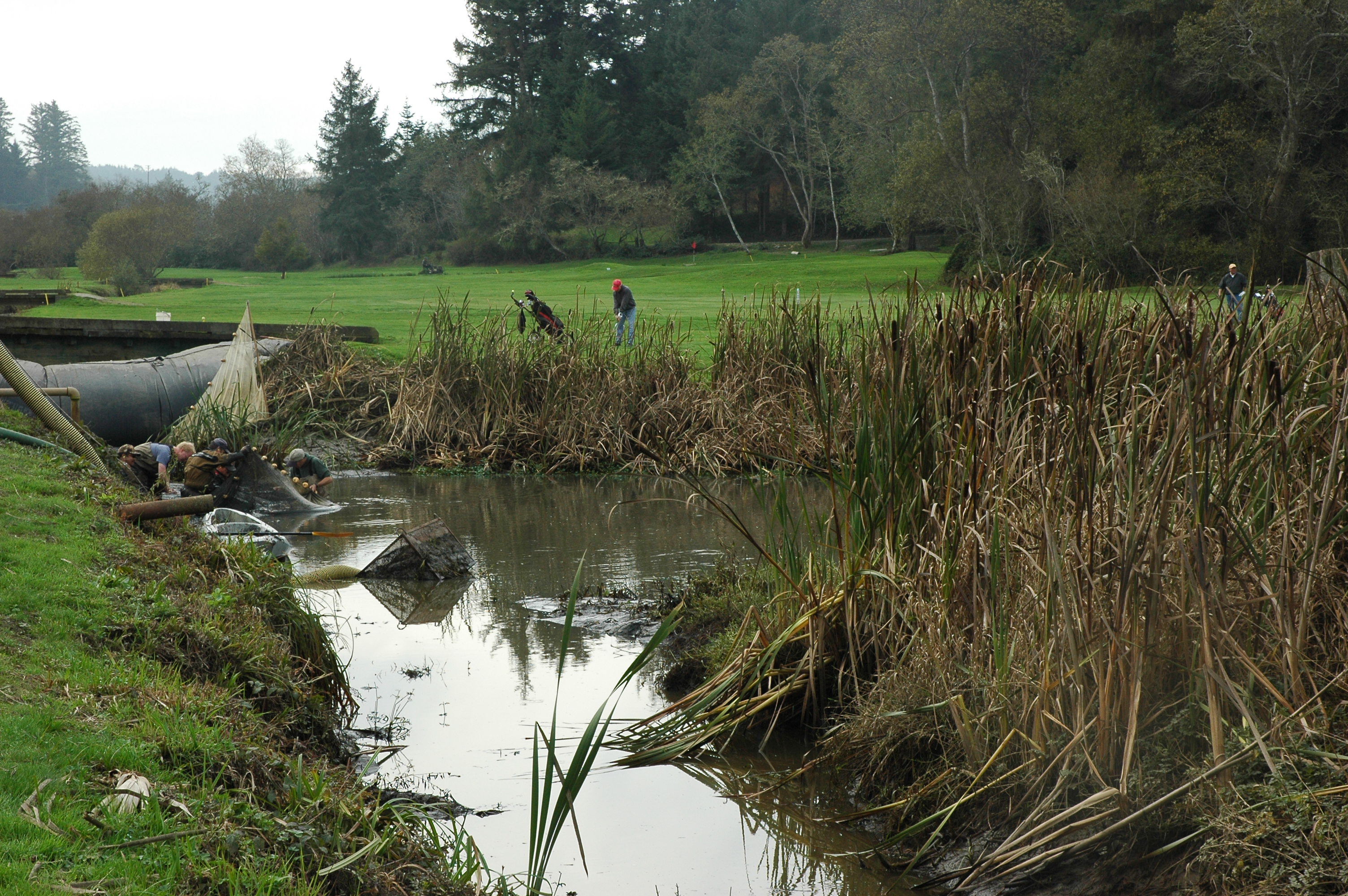
35.) The work area continued to de-water, which aided the fish catching crew.
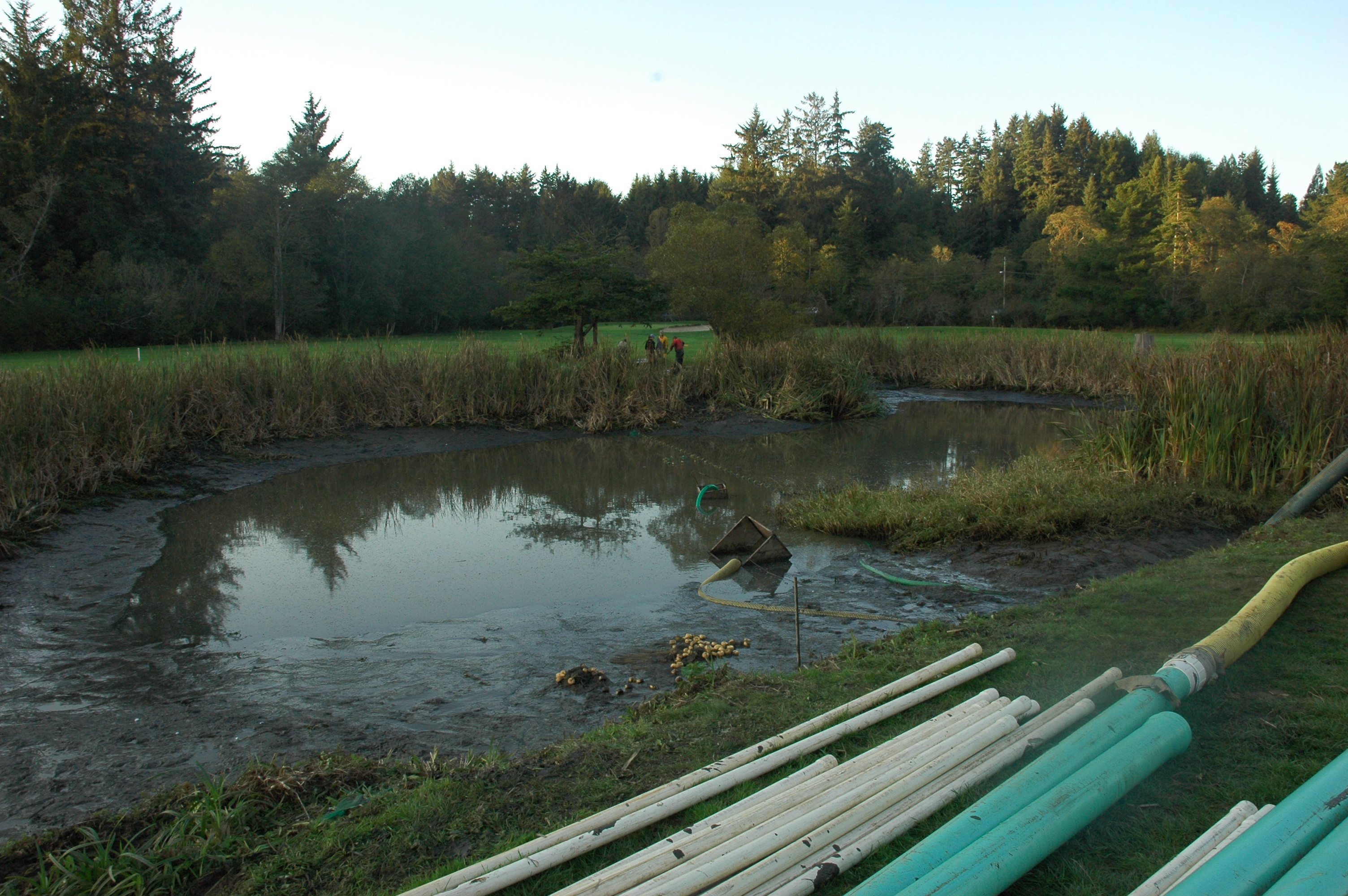
36.) The work area de-watered. Great job AquaDam!
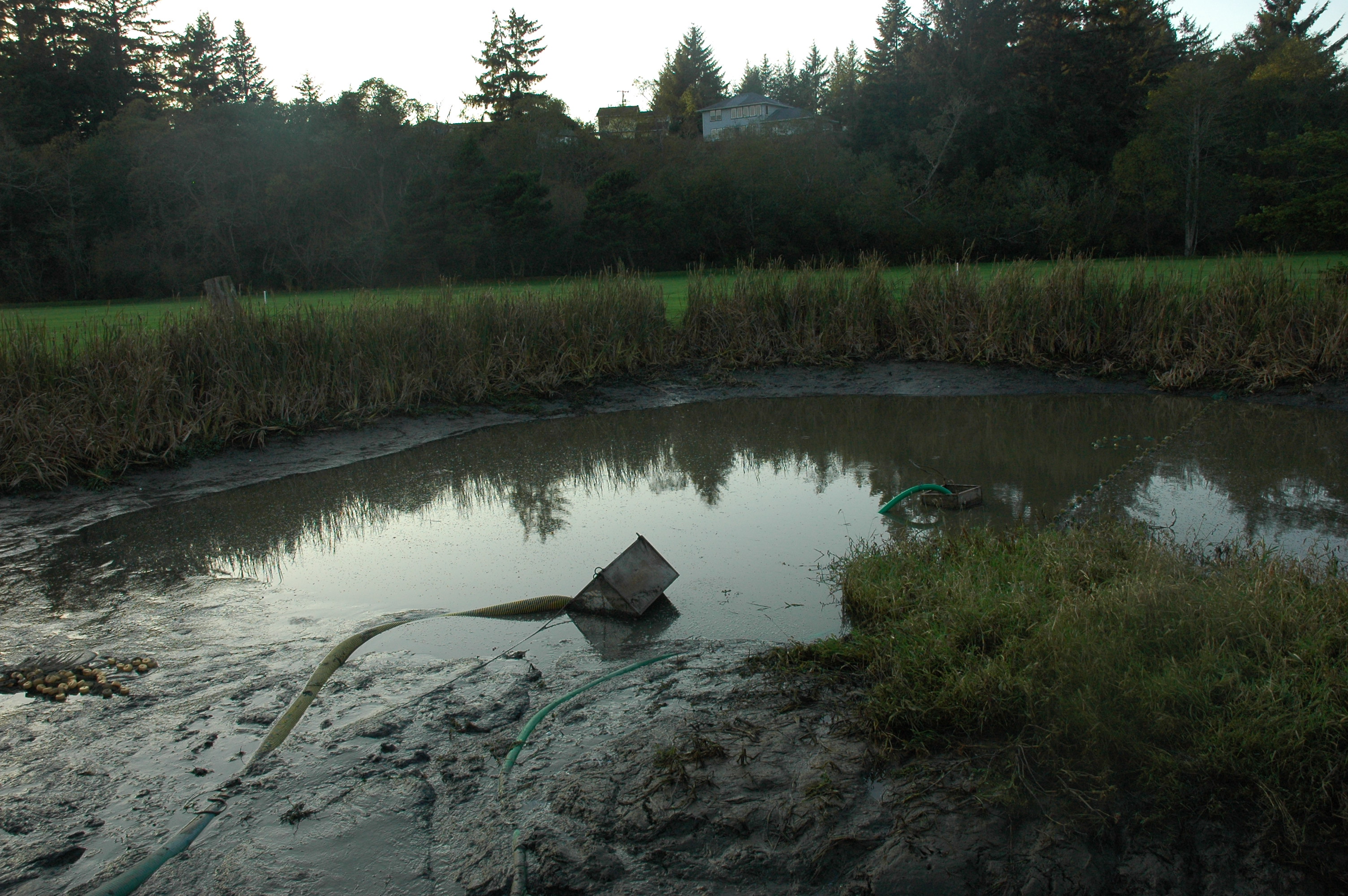
37.) Another great cofferdam formed by using AquaDams.
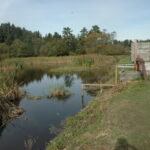
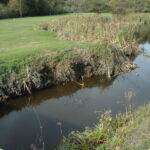

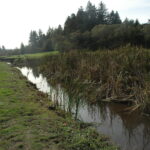
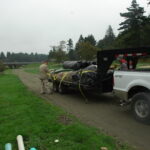
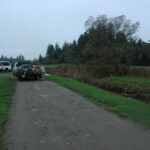
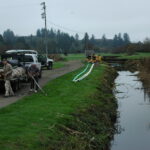
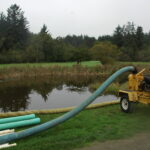
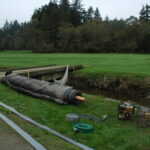
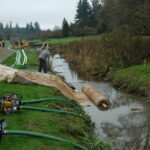
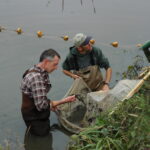
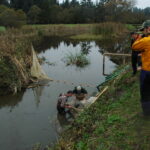
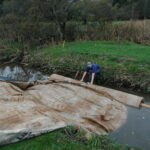
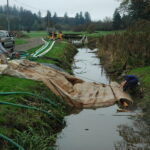
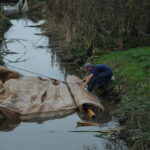
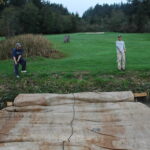
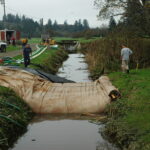
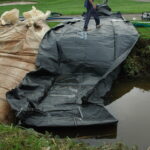
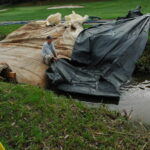
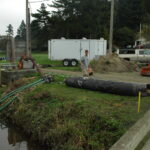
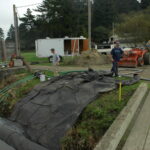
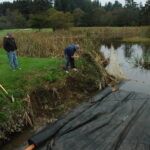
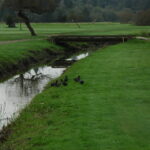
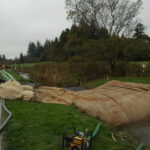
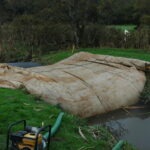
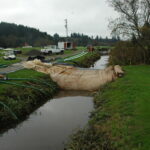
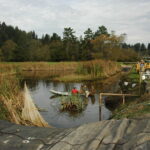
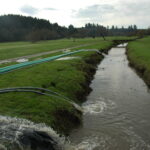

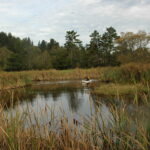

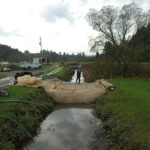
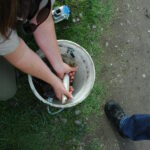
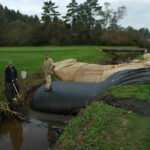
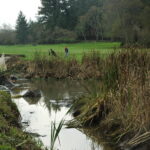
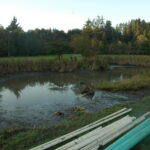
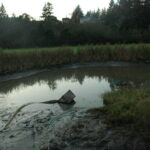
Two 8ft Tall AquaDams, 4ft Tall Support AquaDam, Stream Diversion, Invasive Species Removal, Pond Isolation, Staggered Configuration
